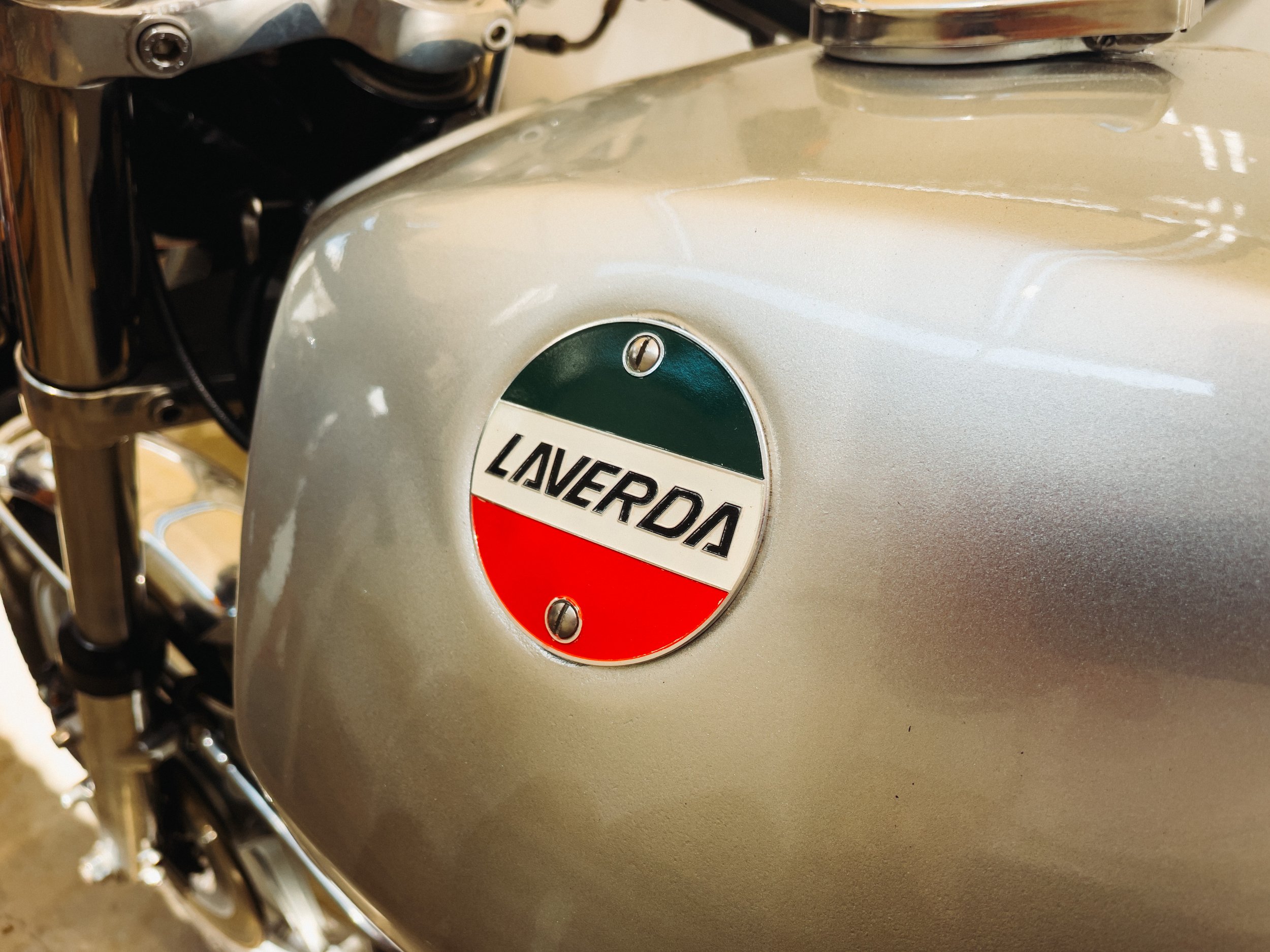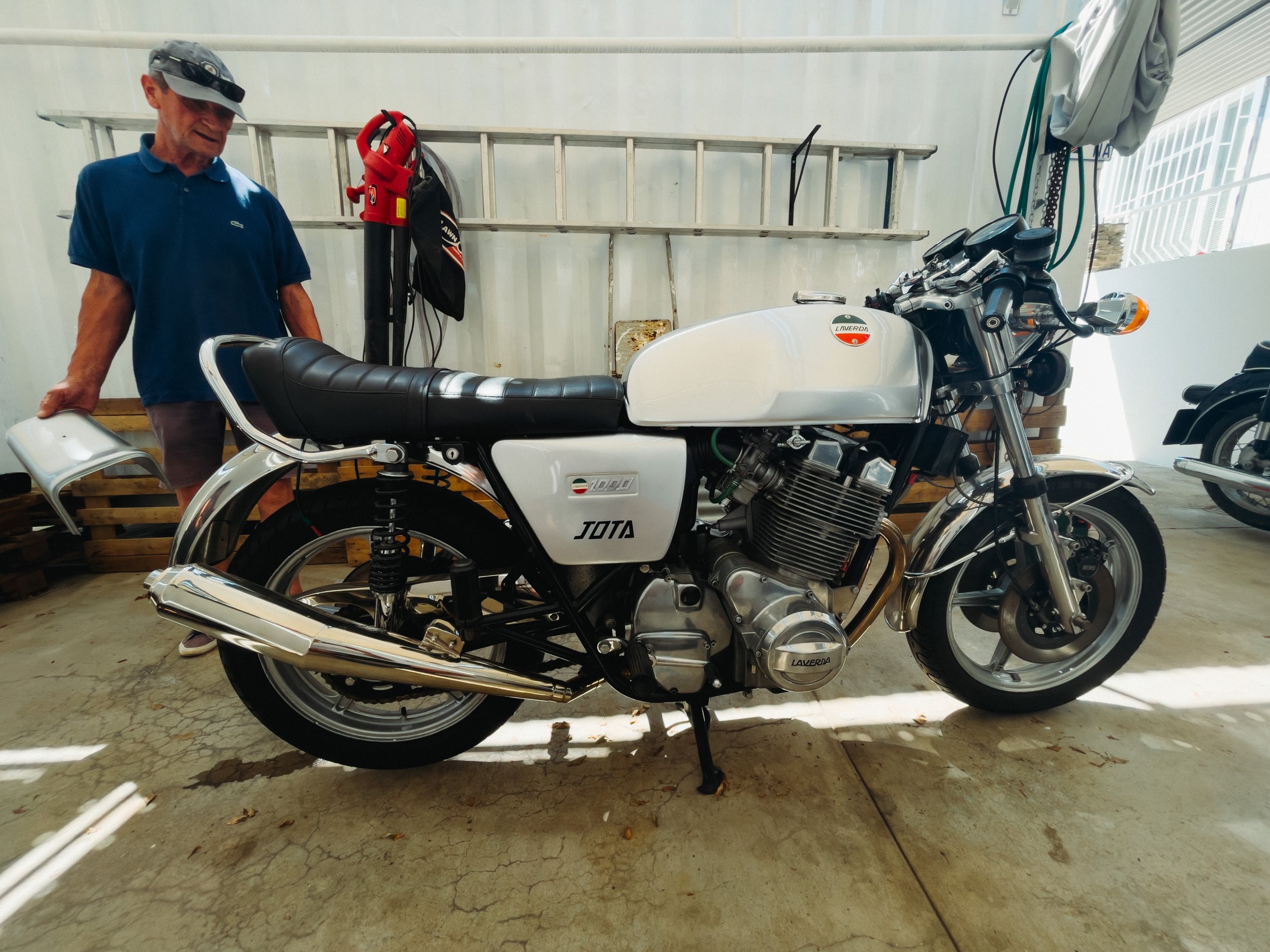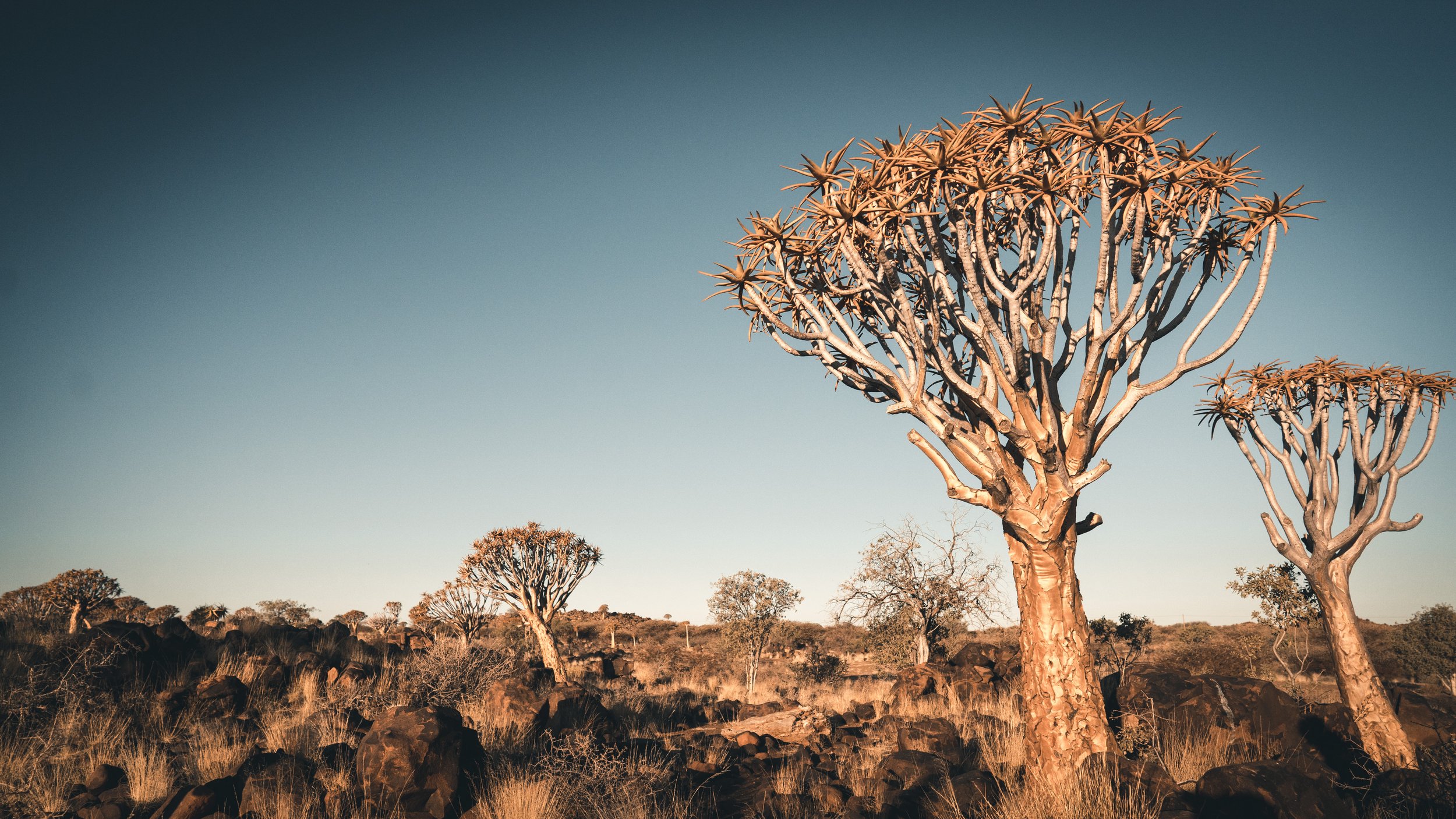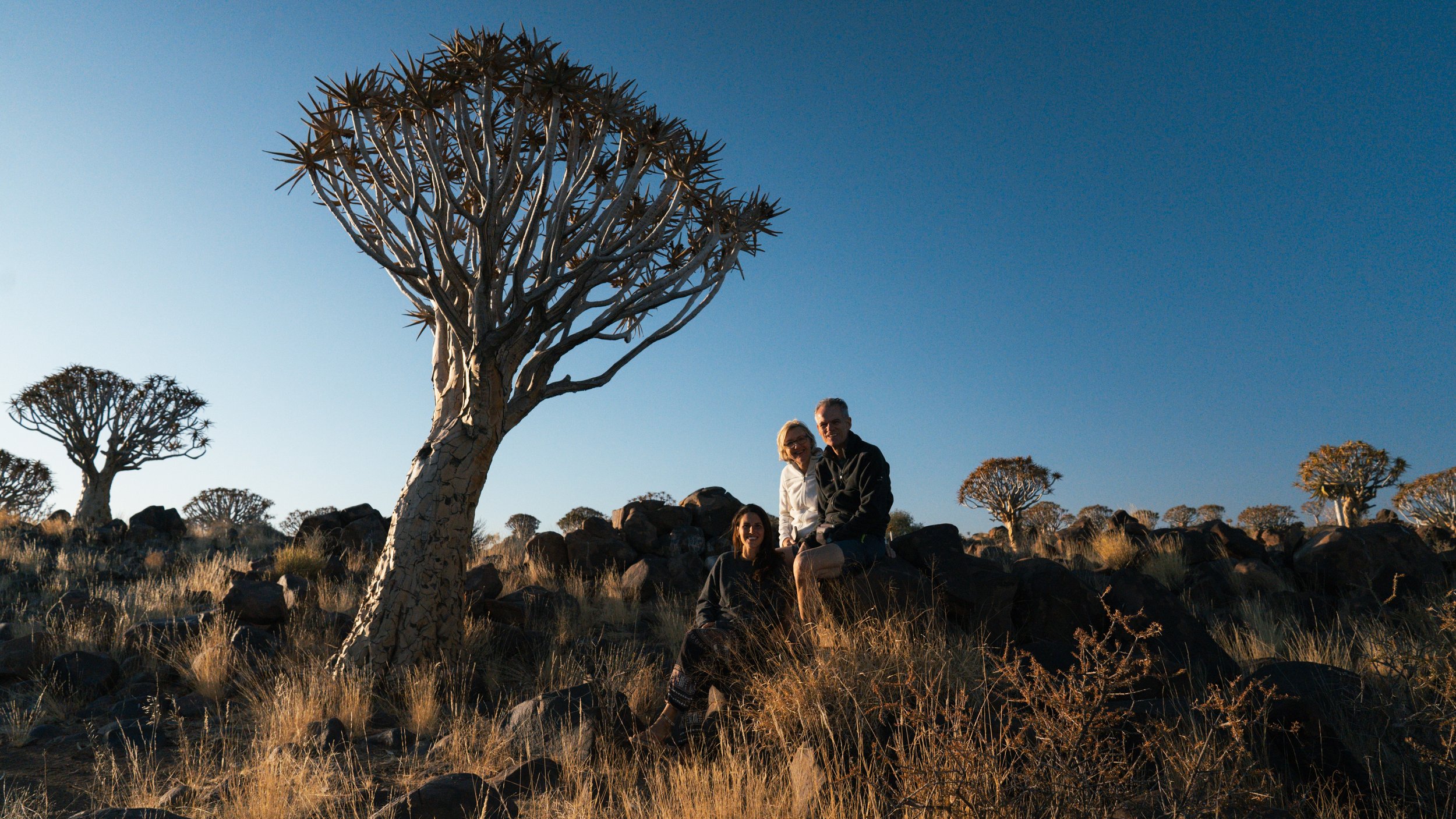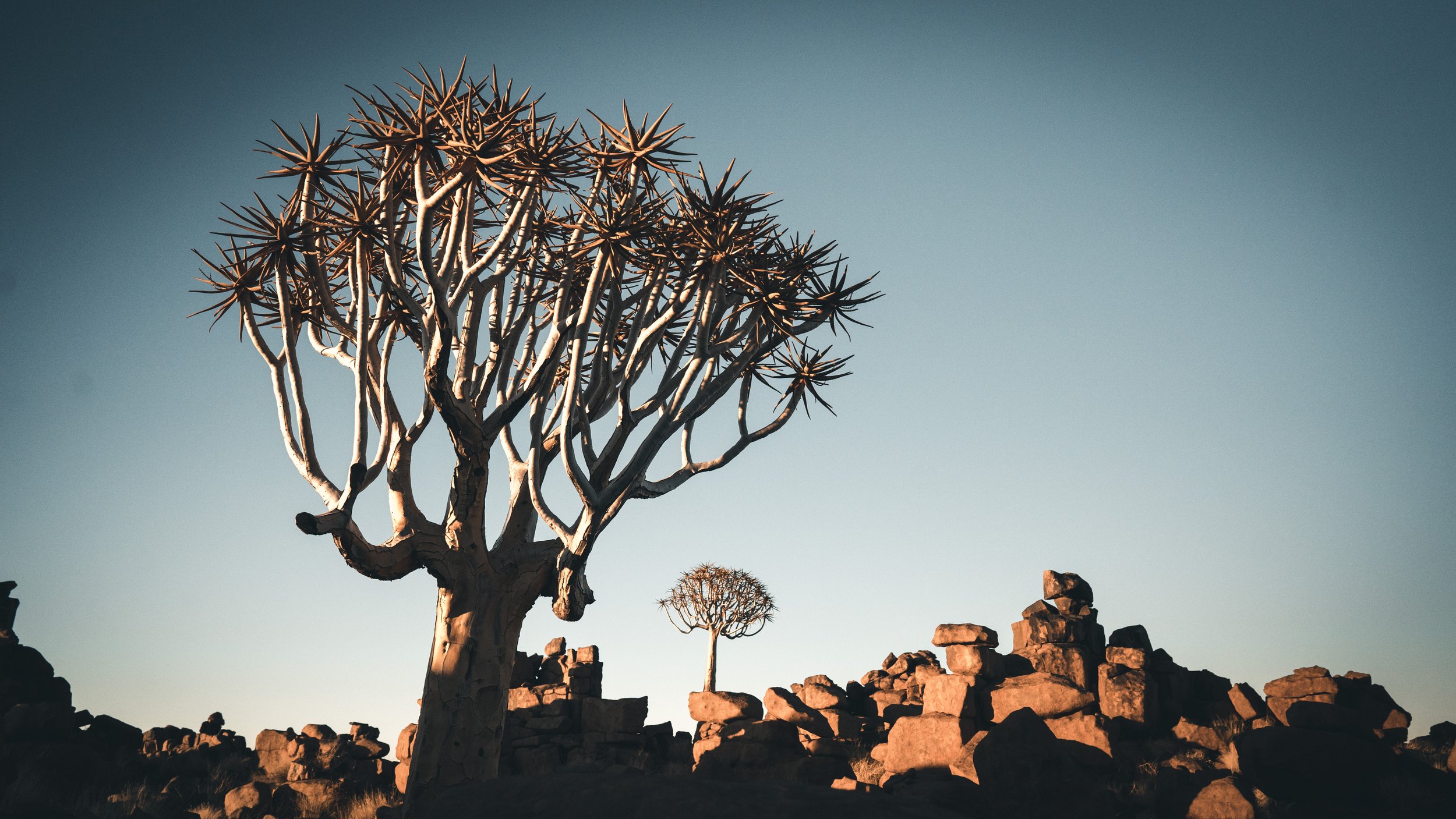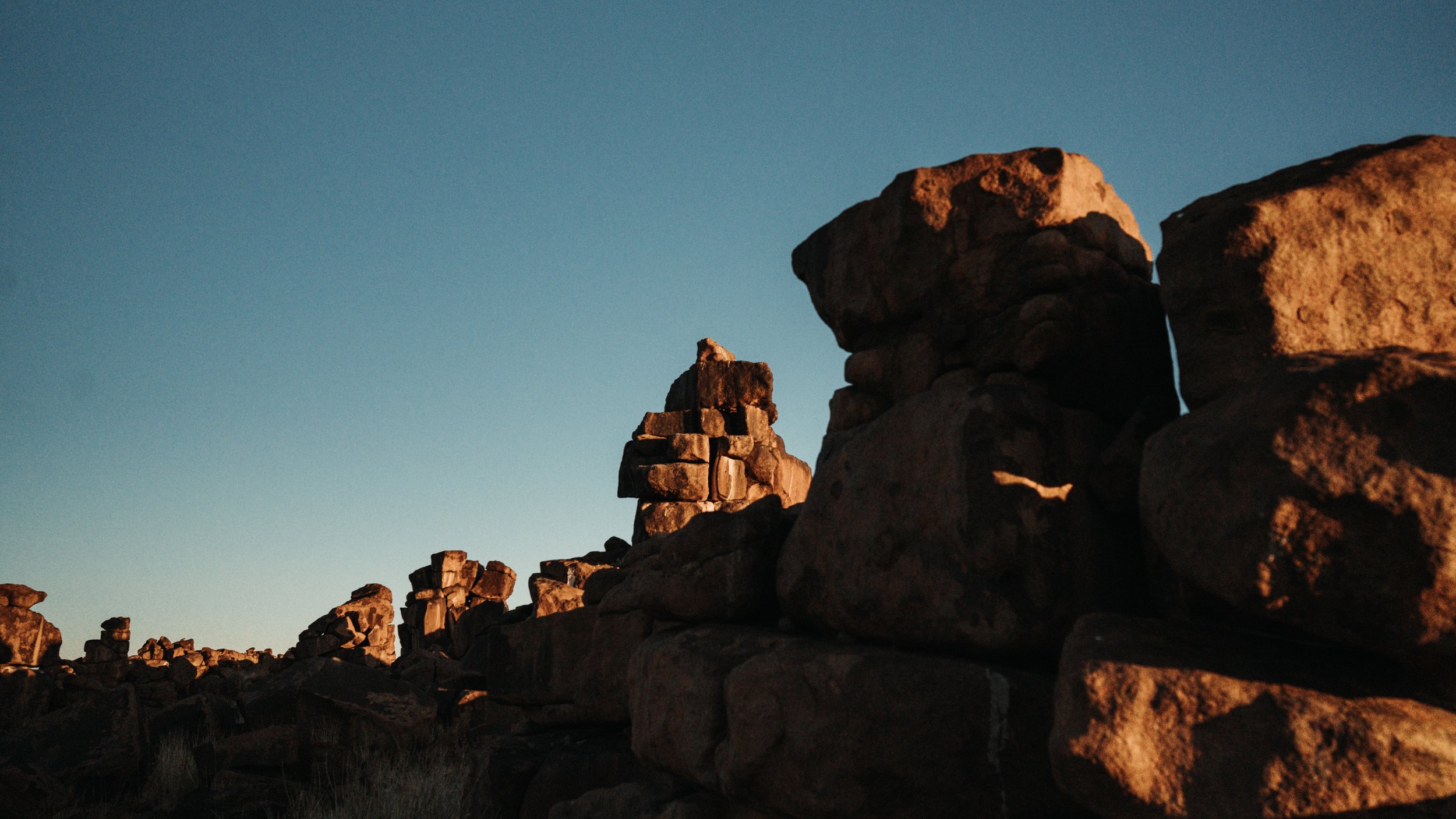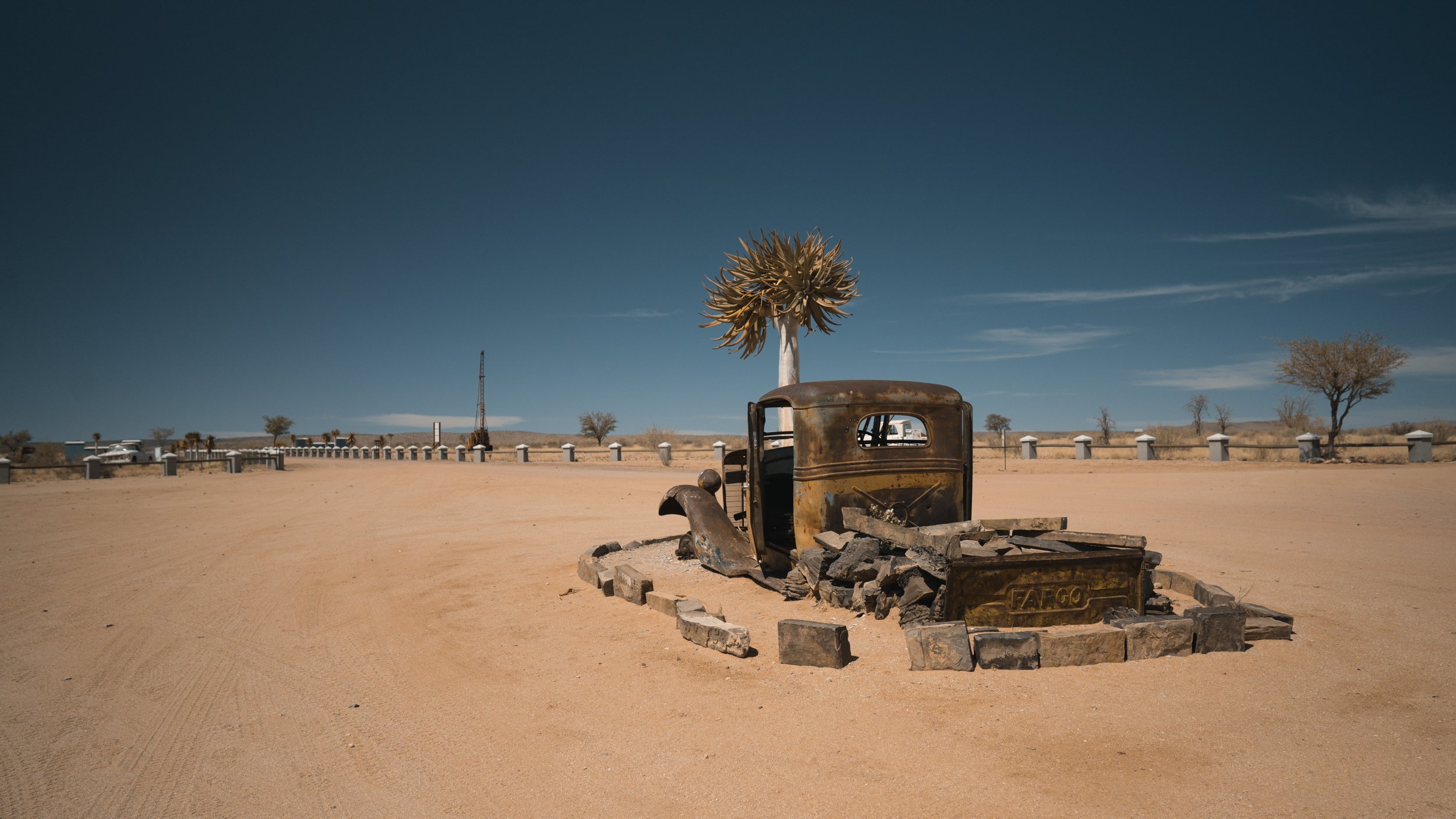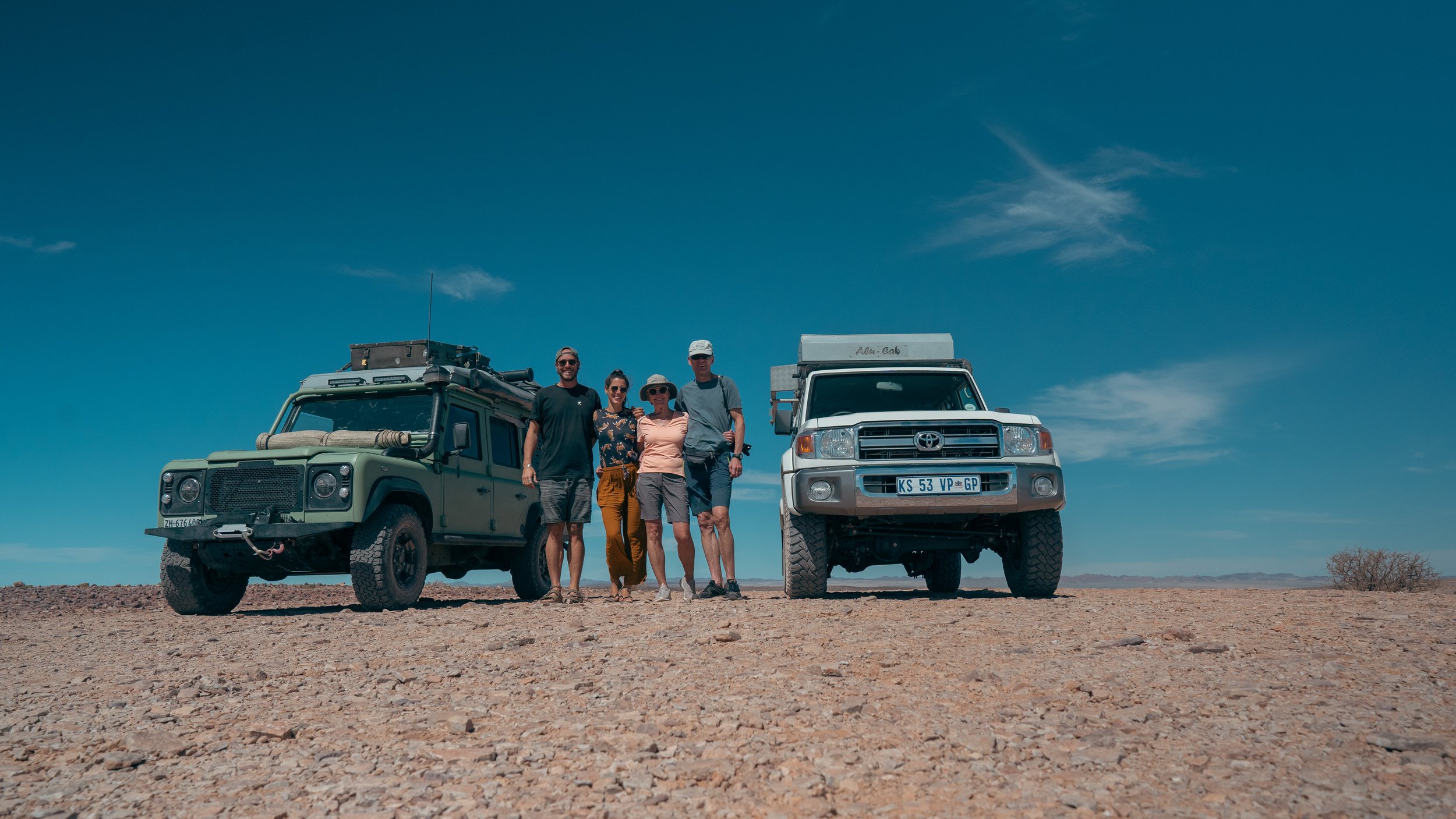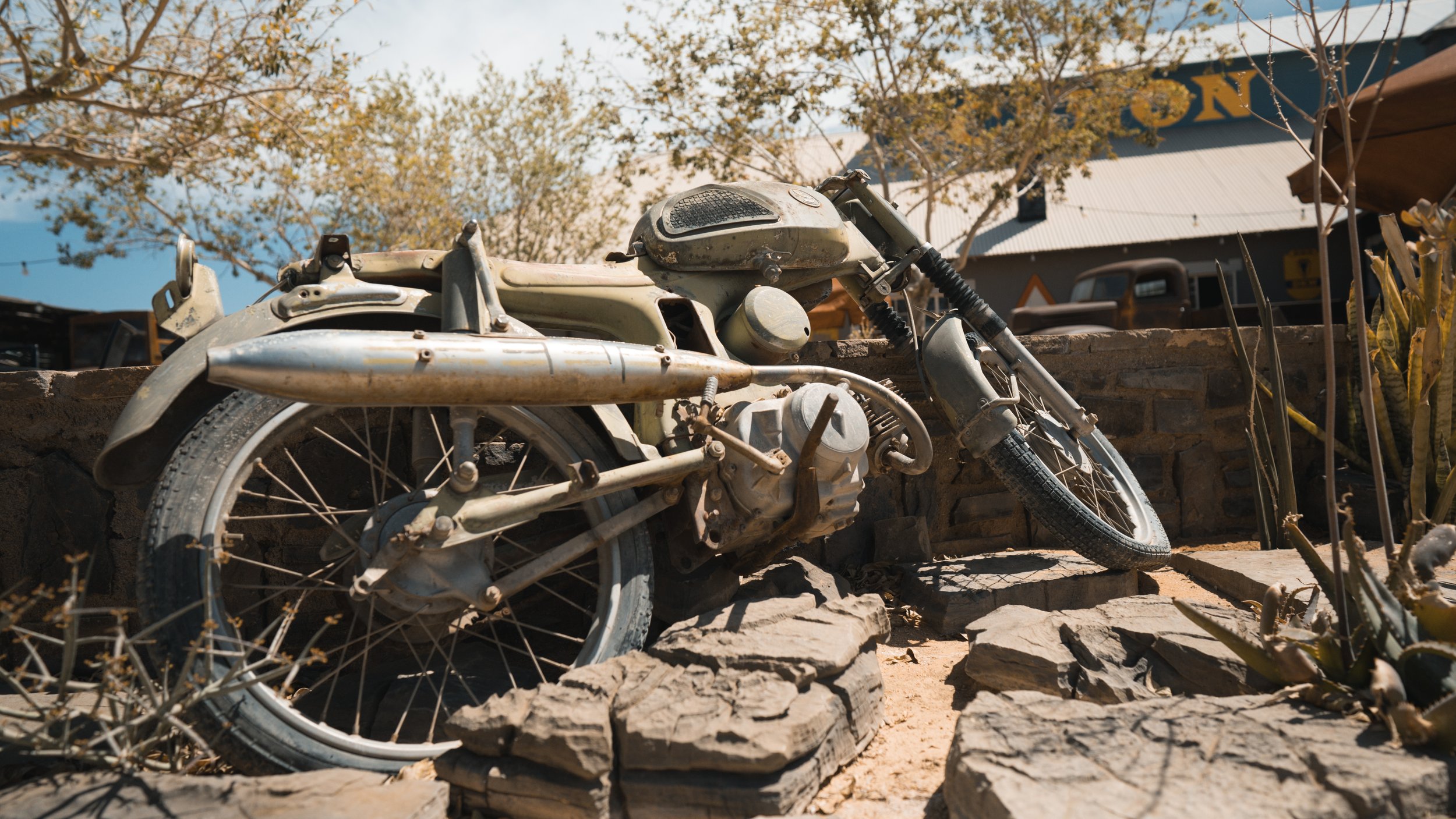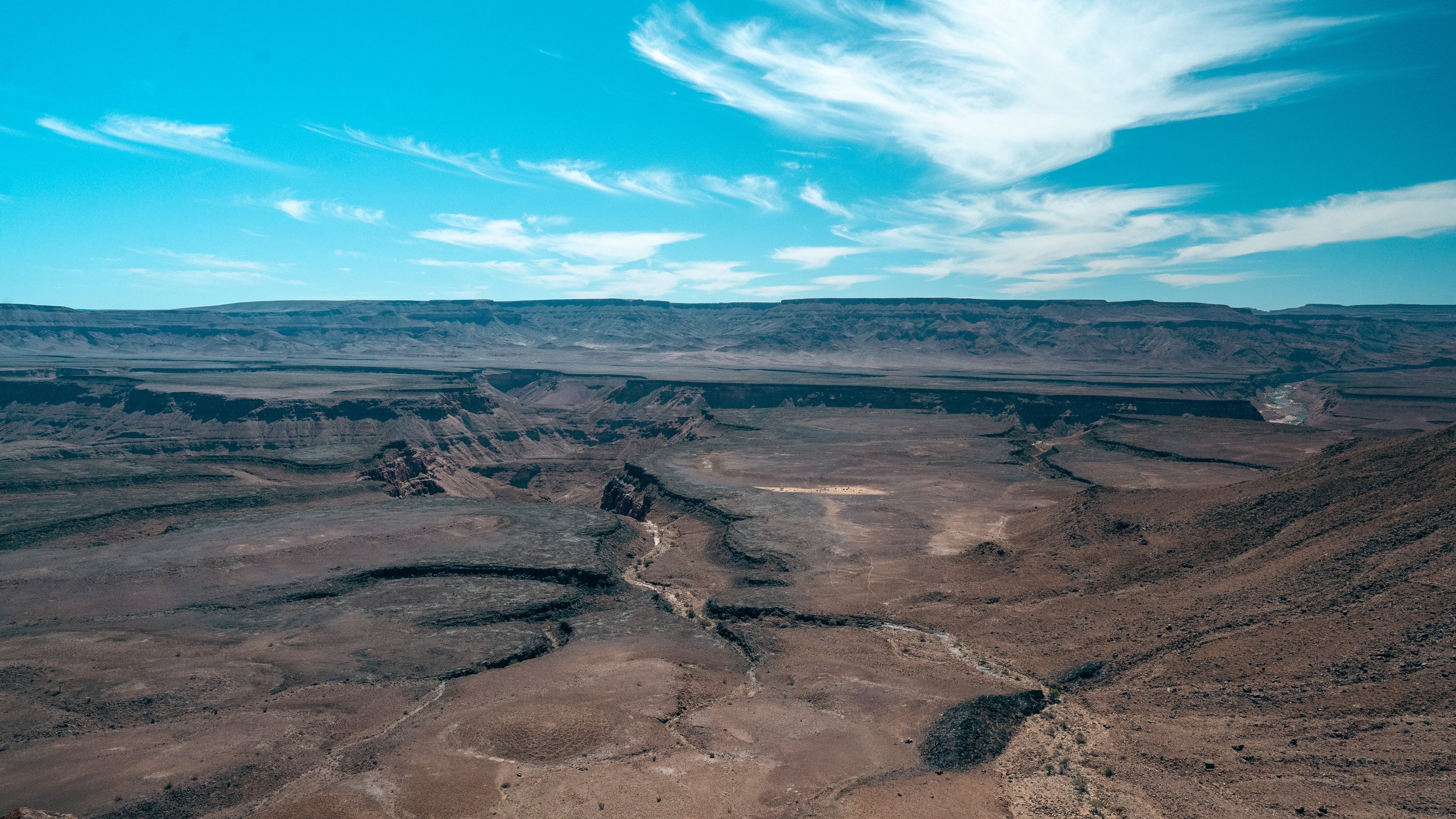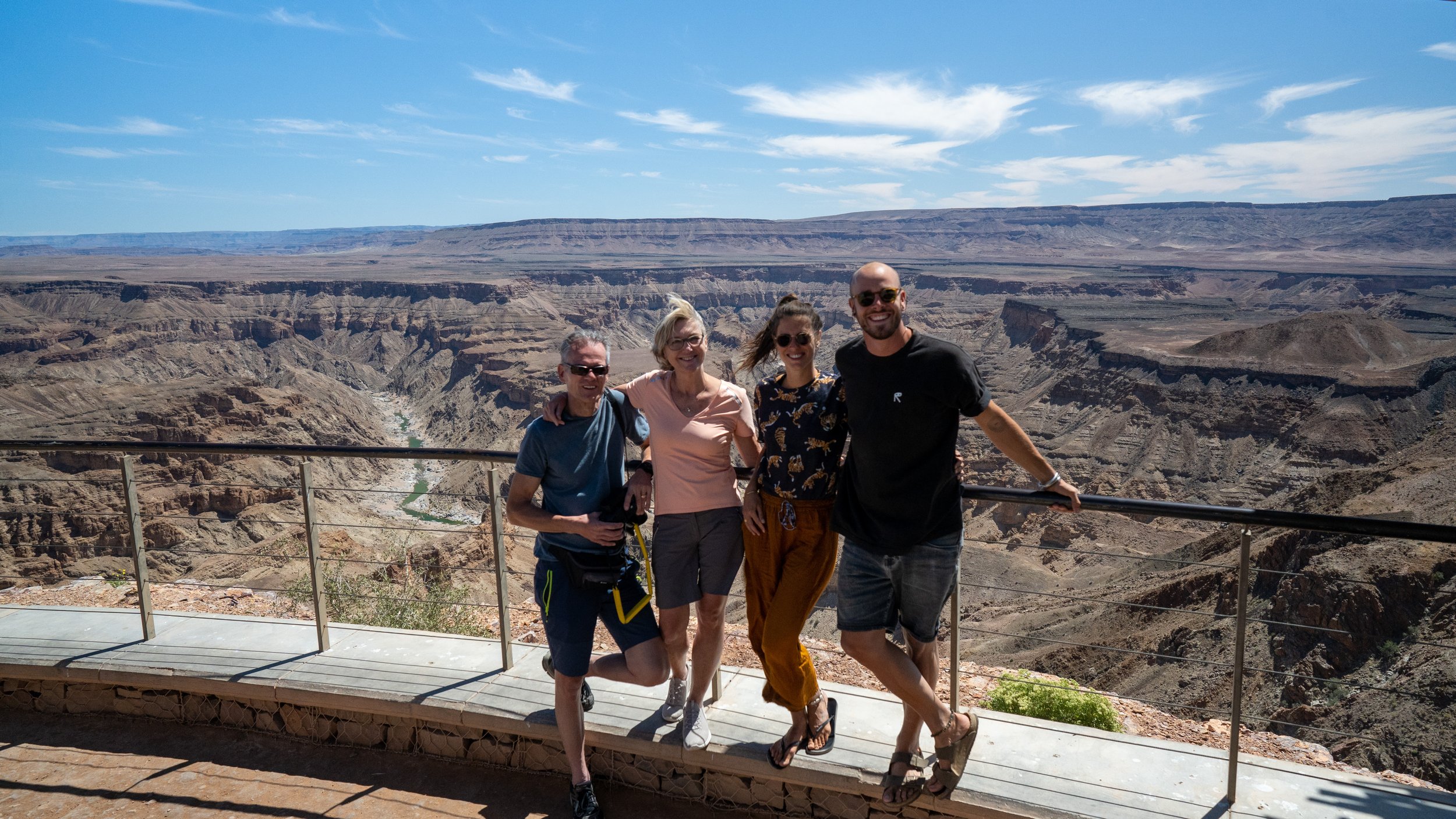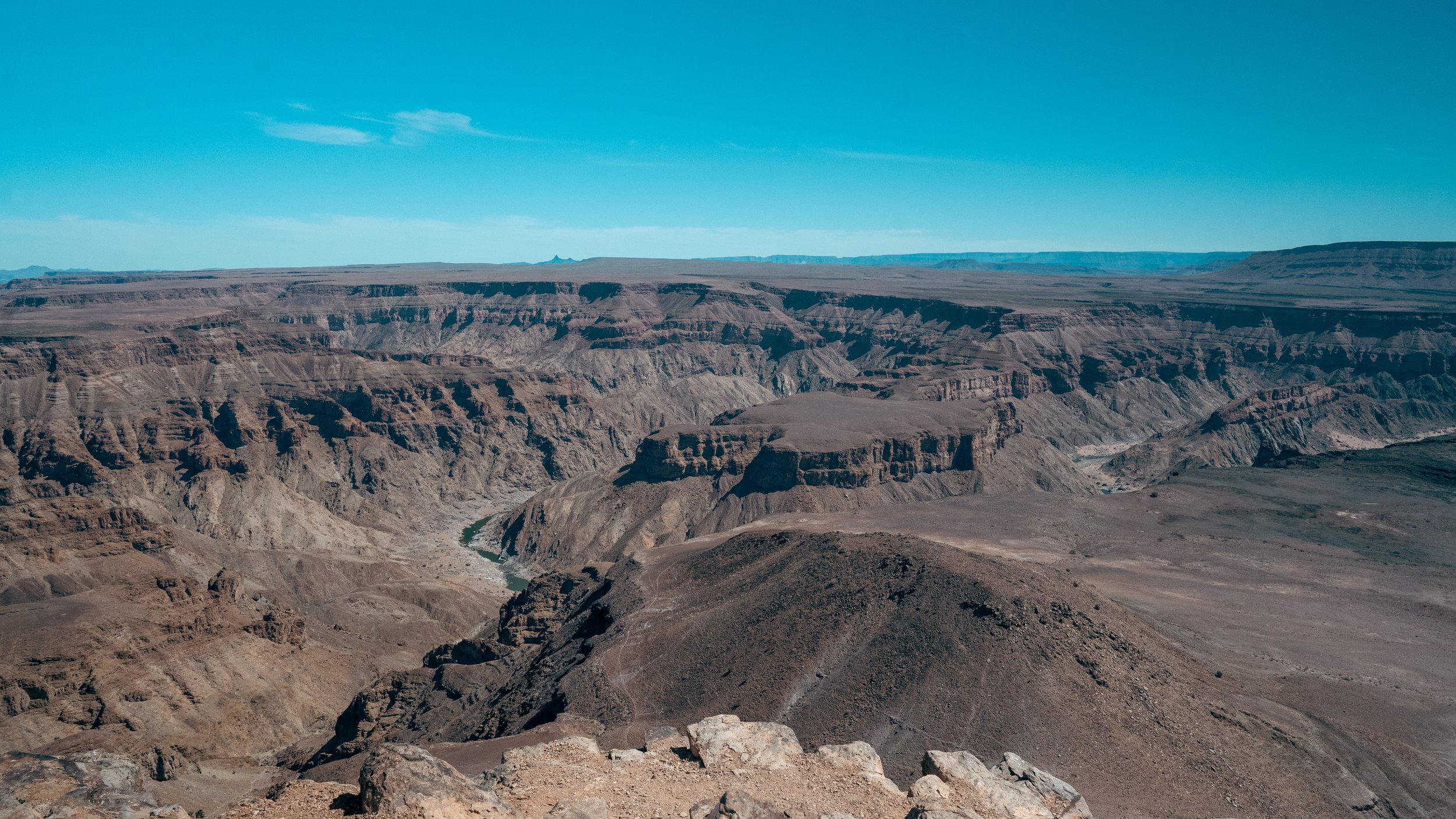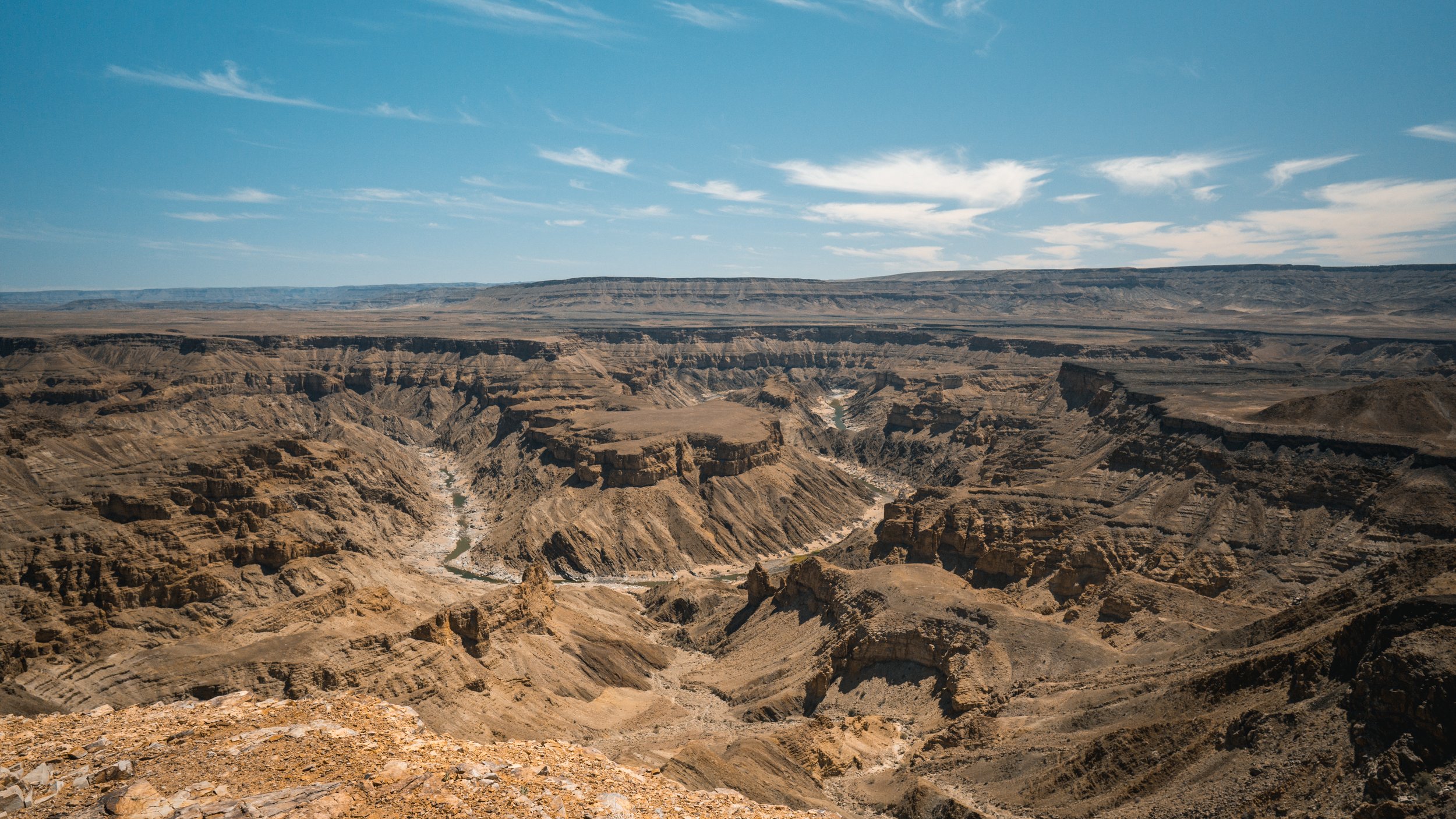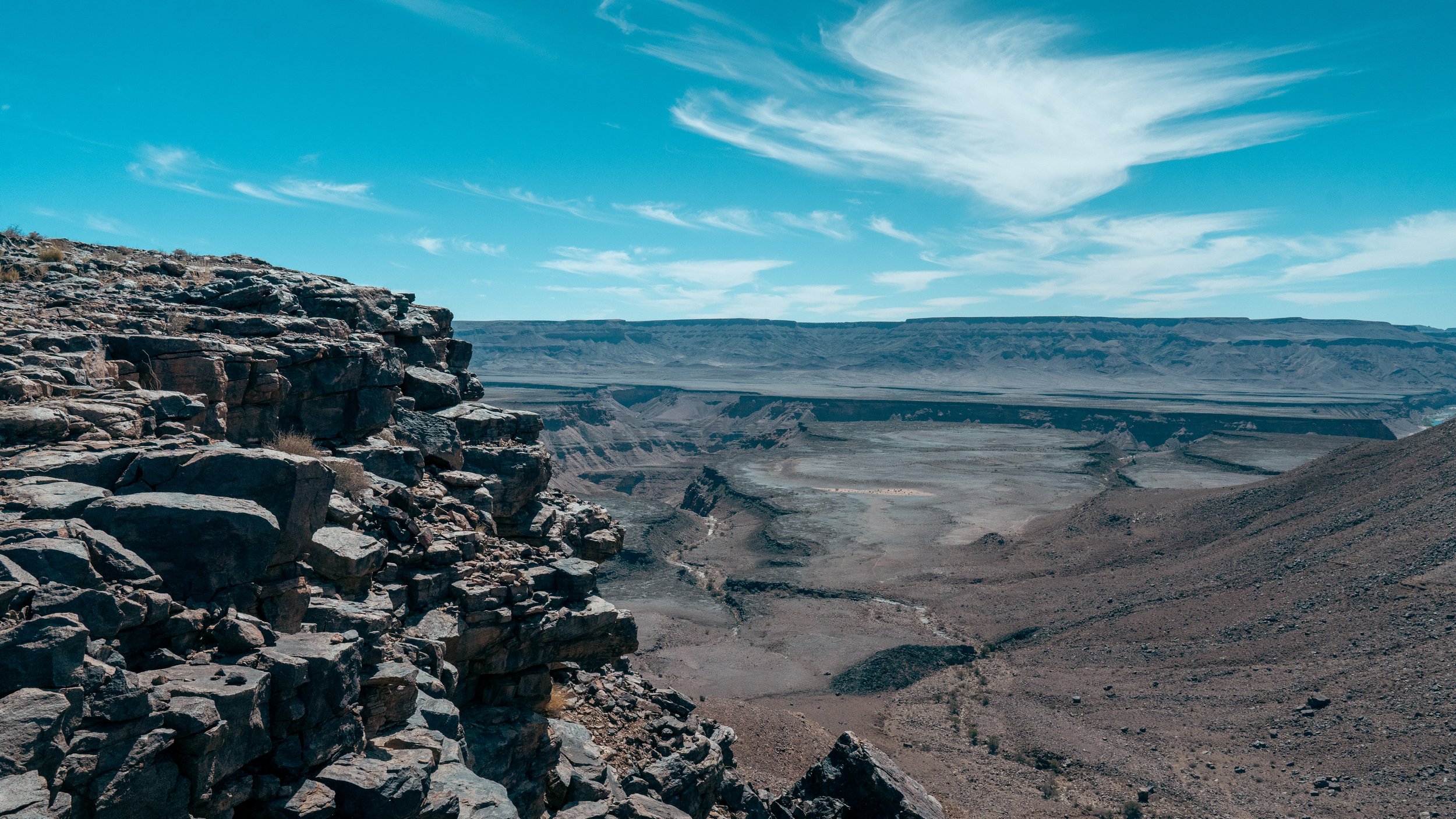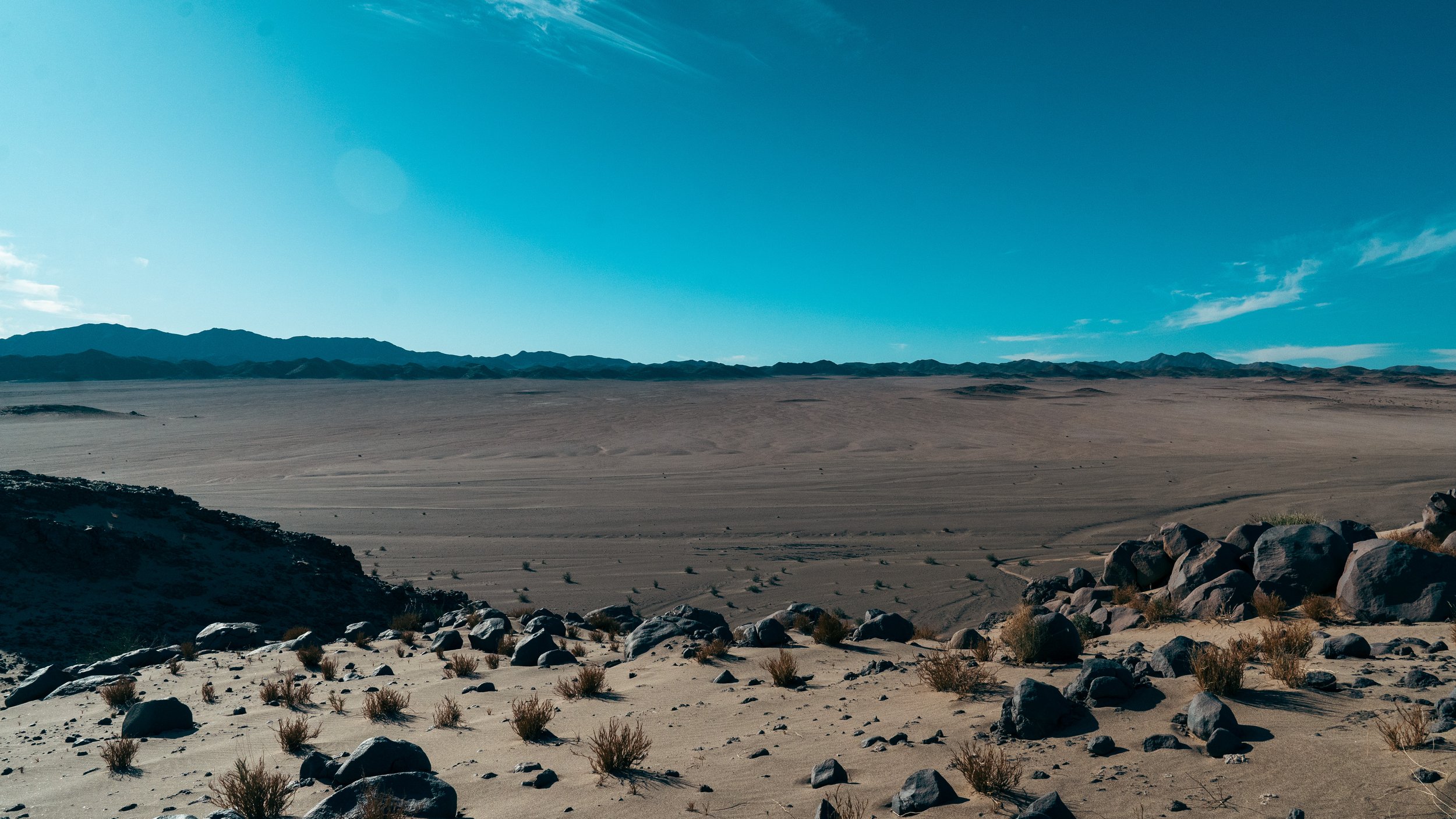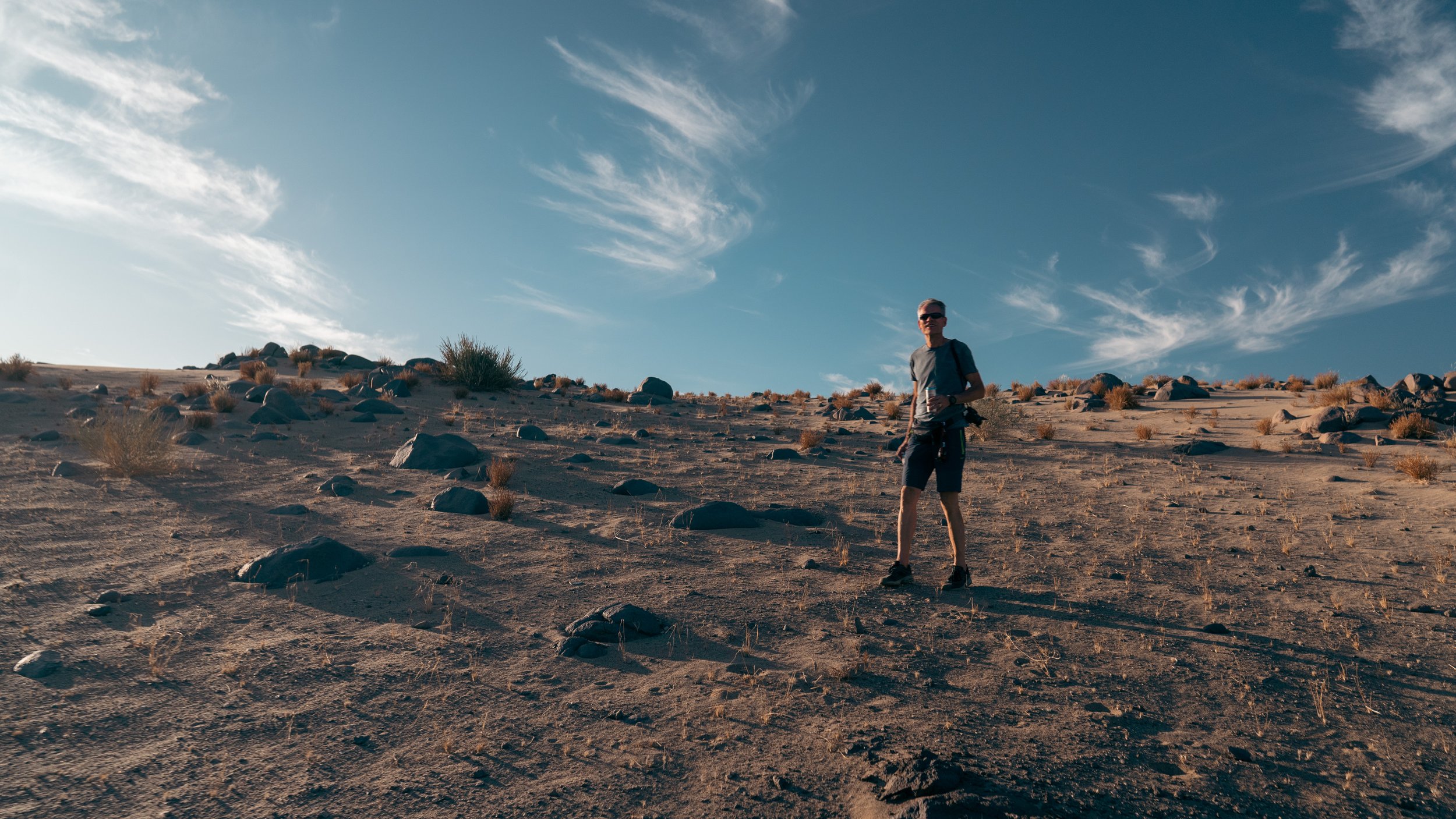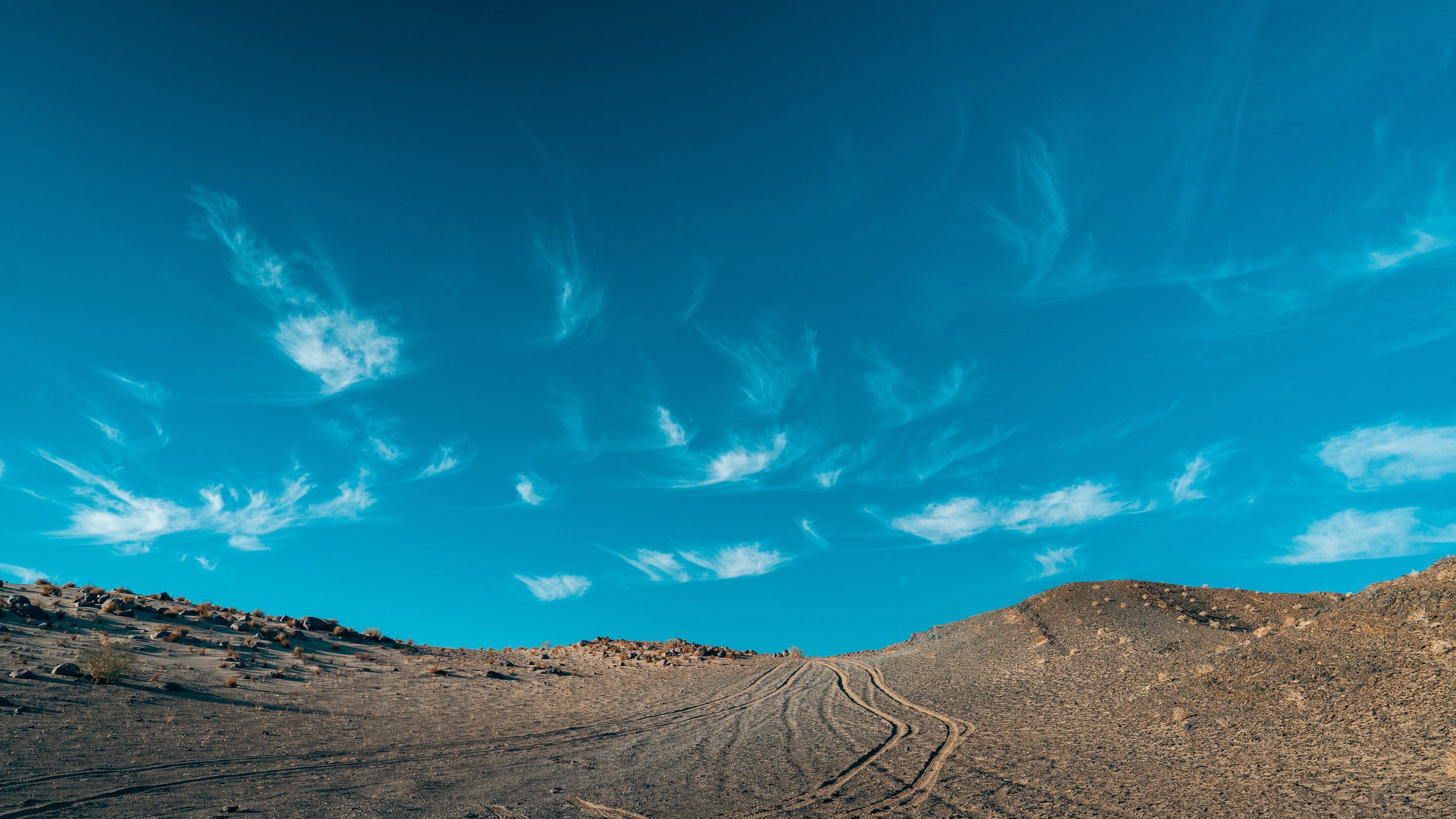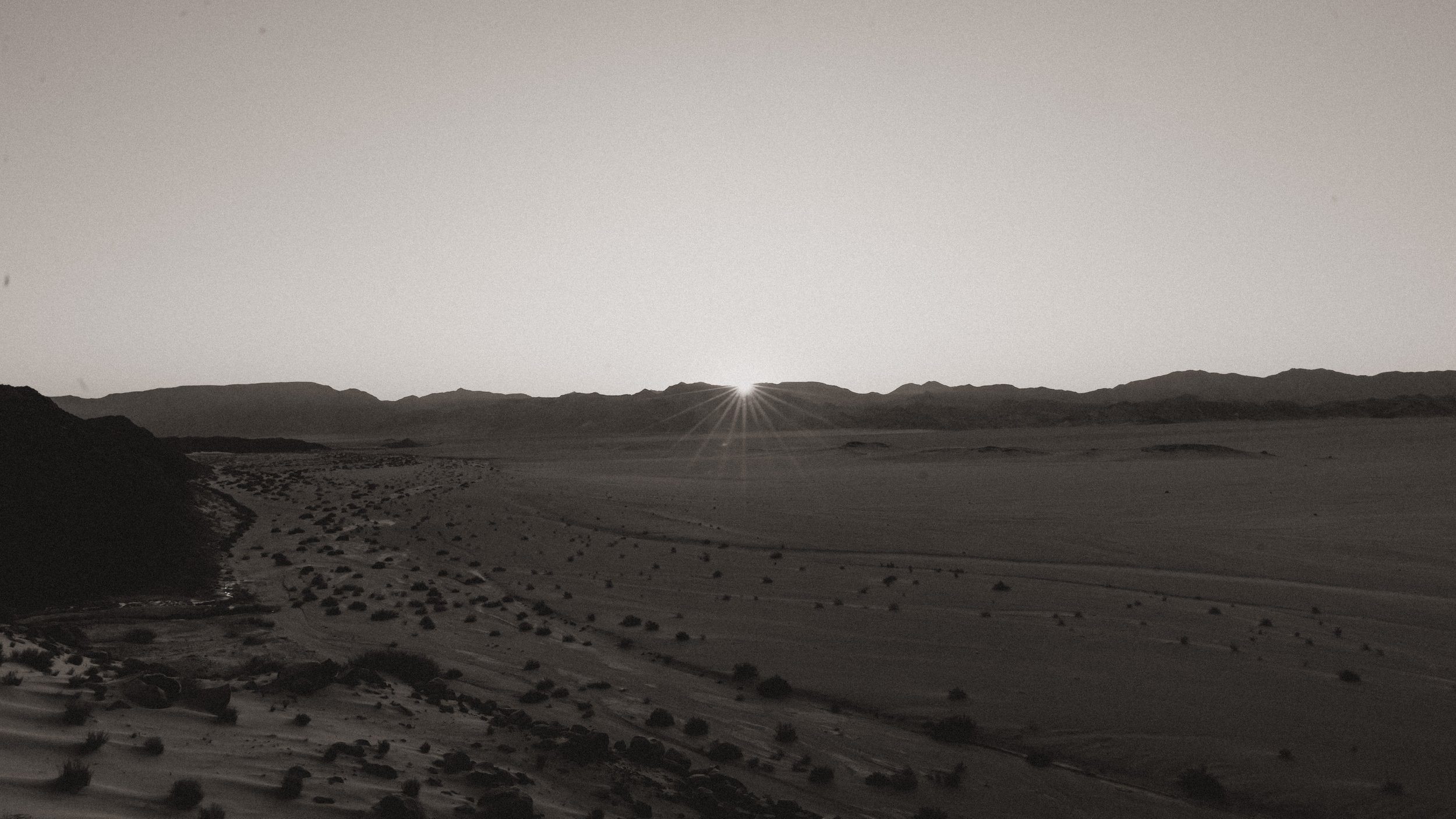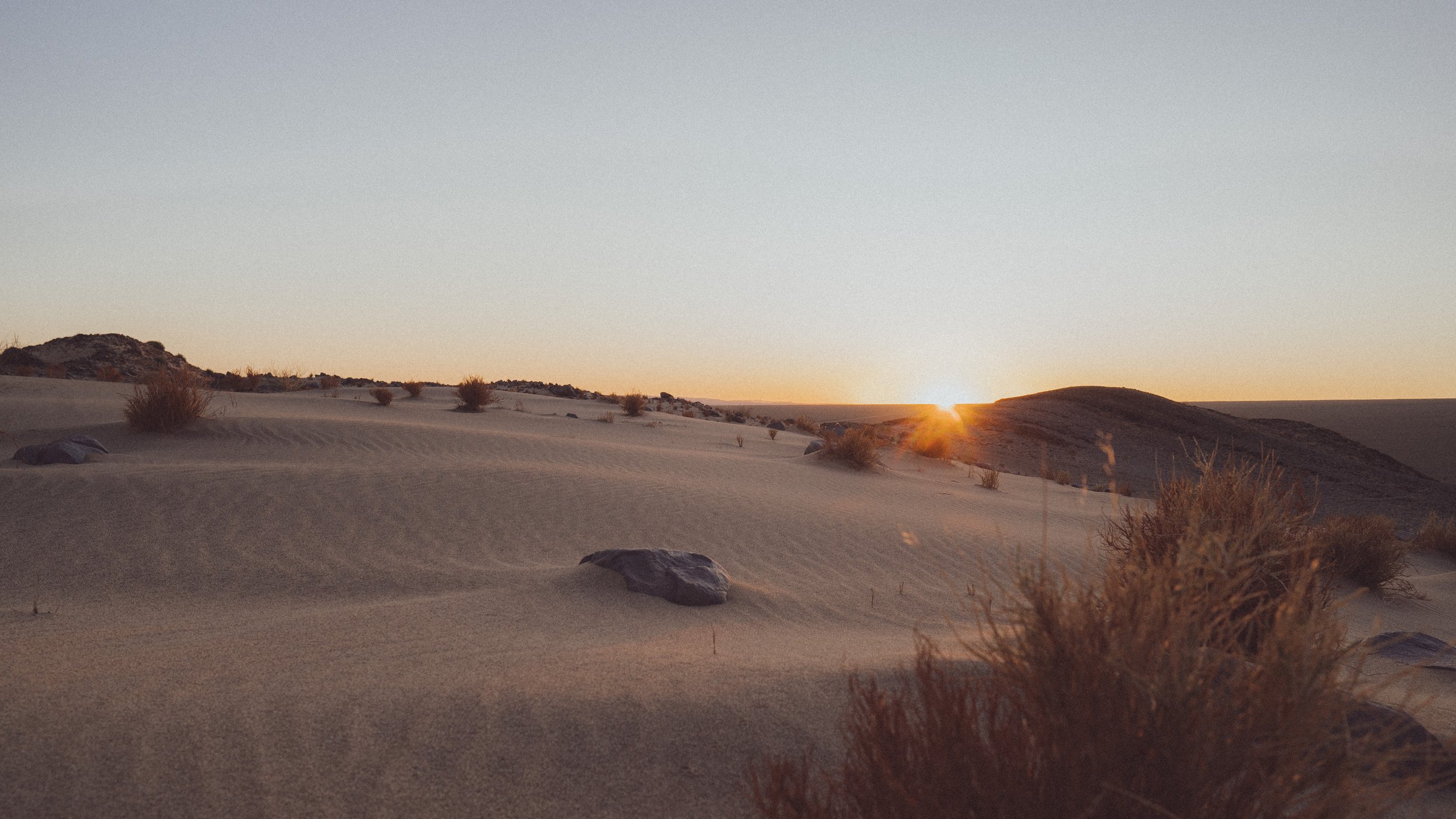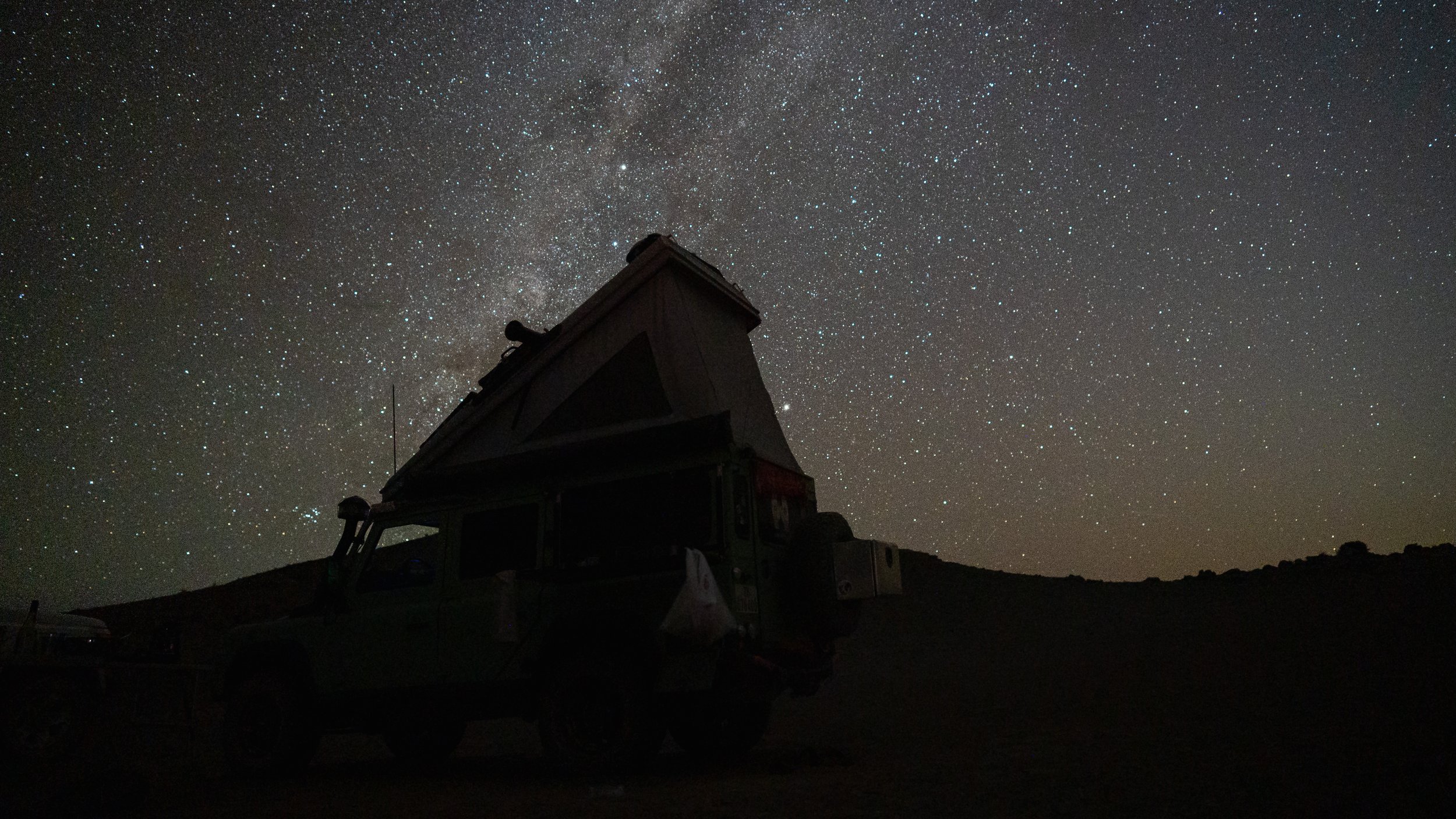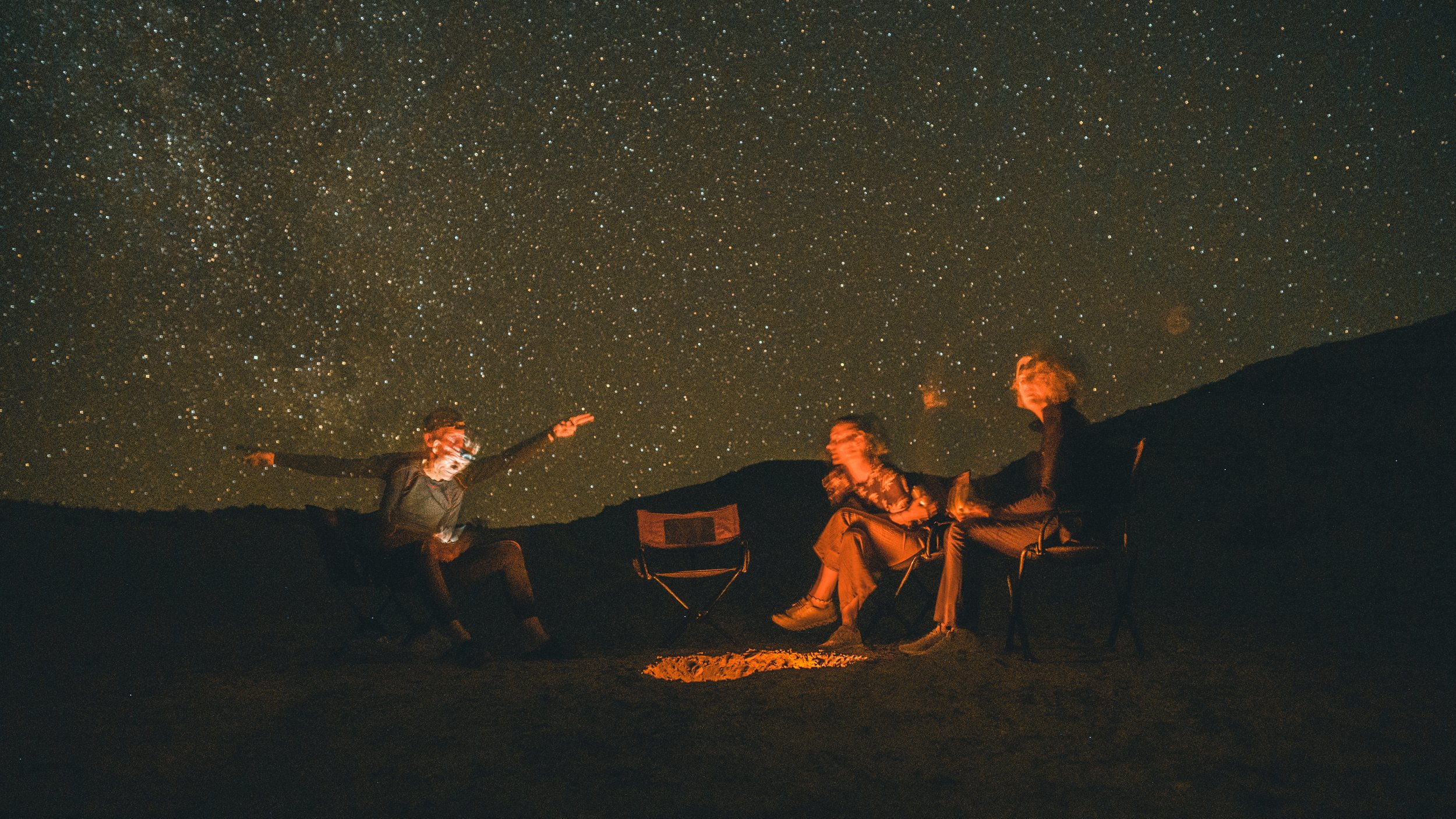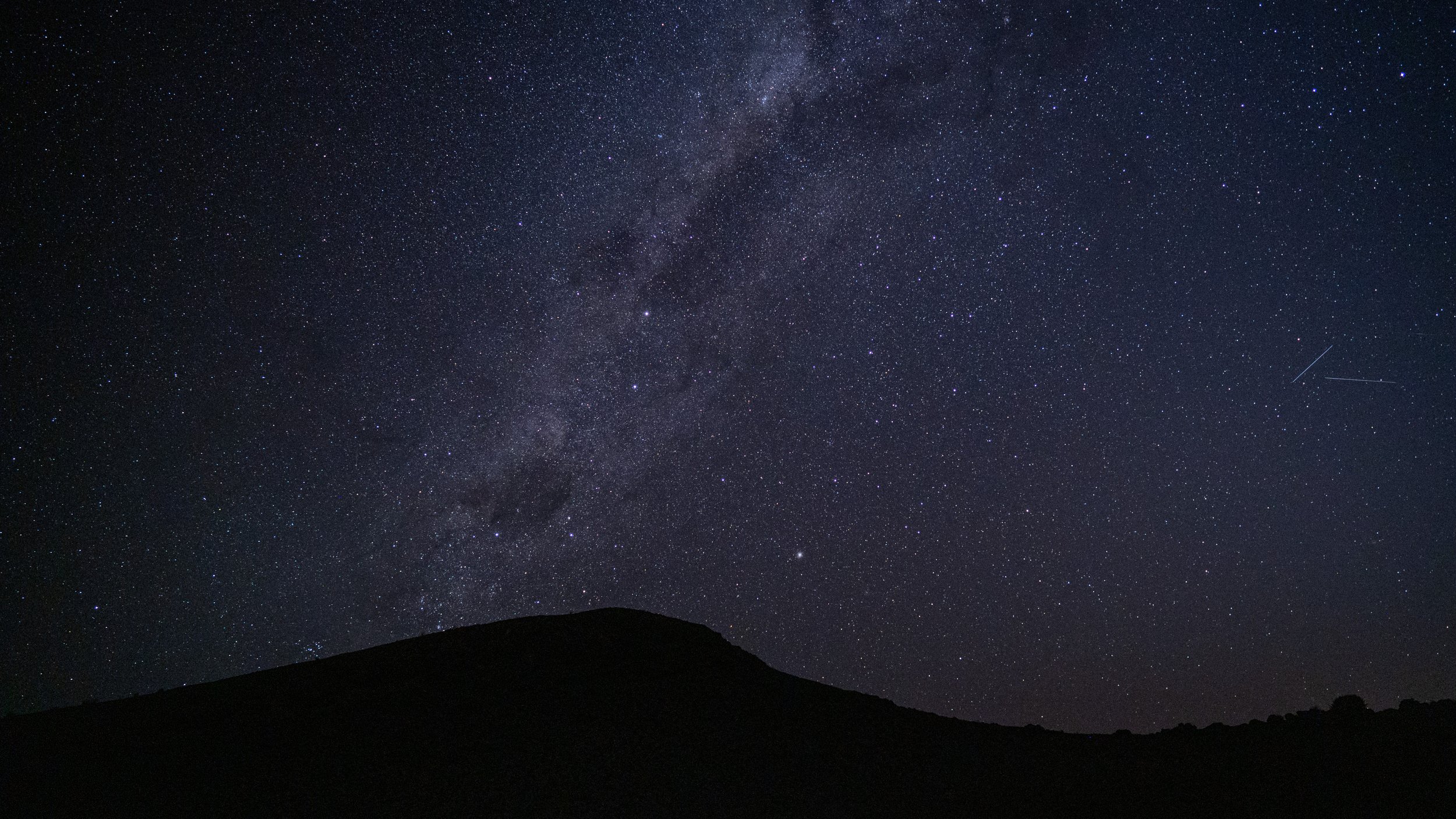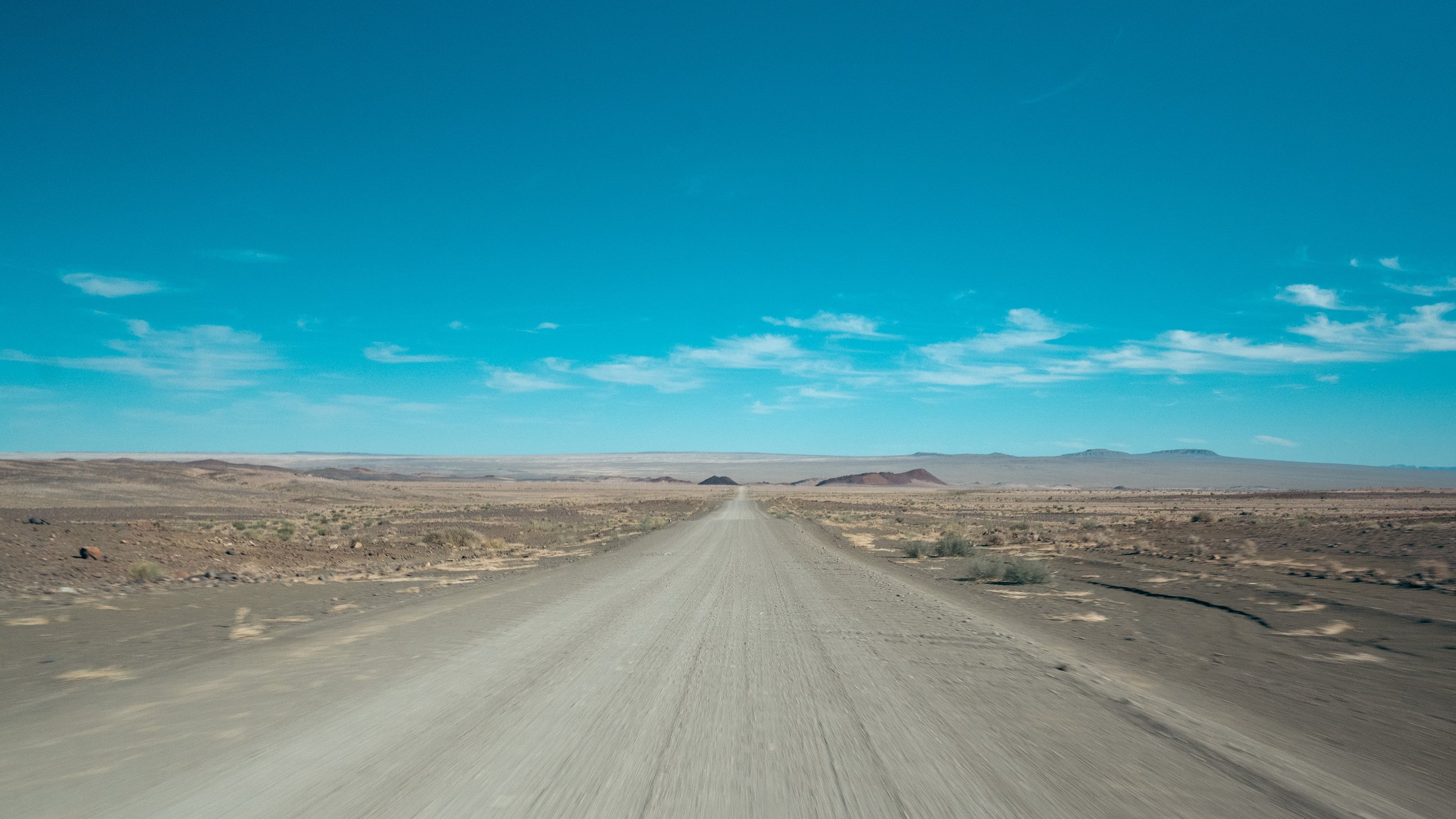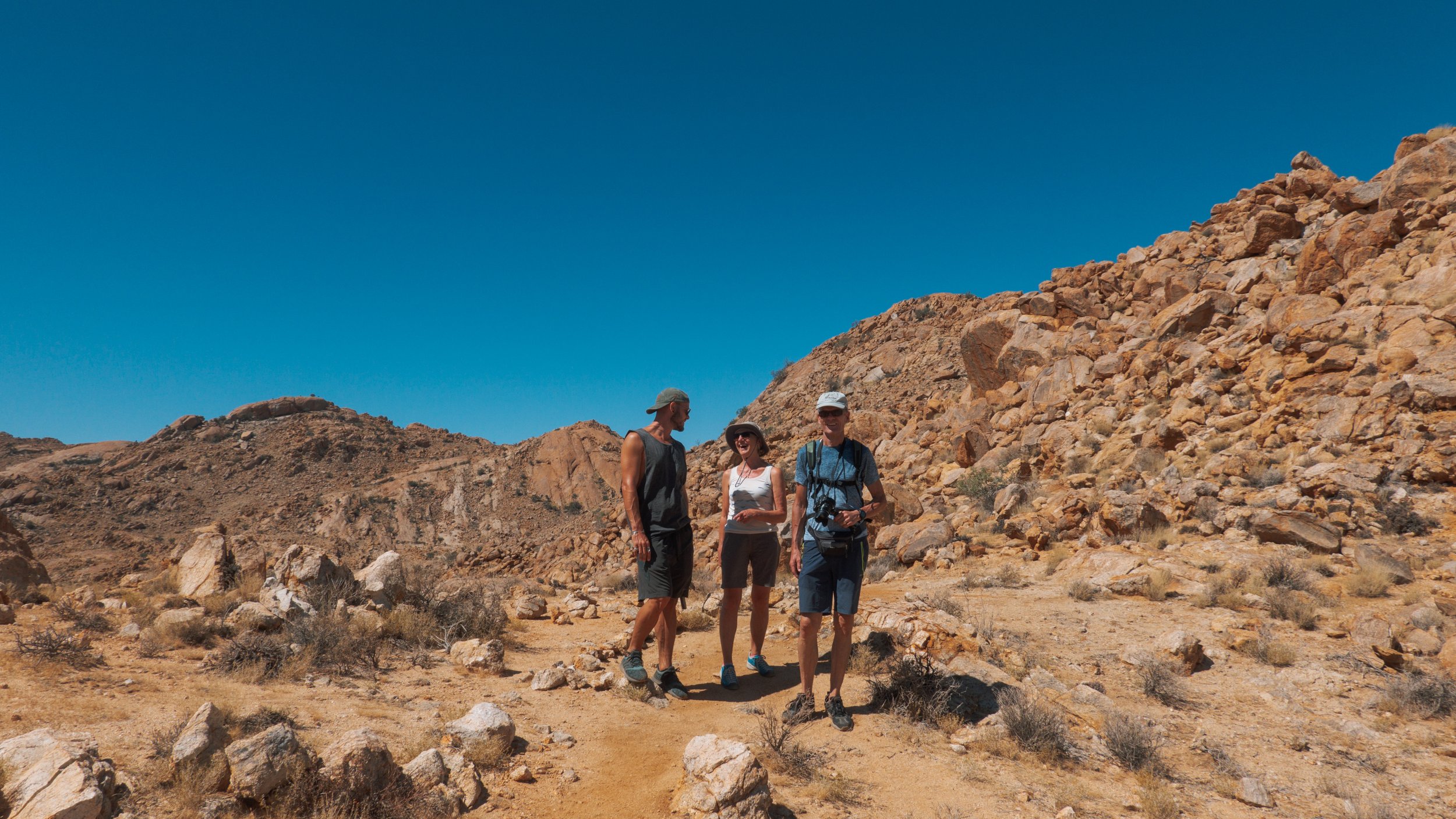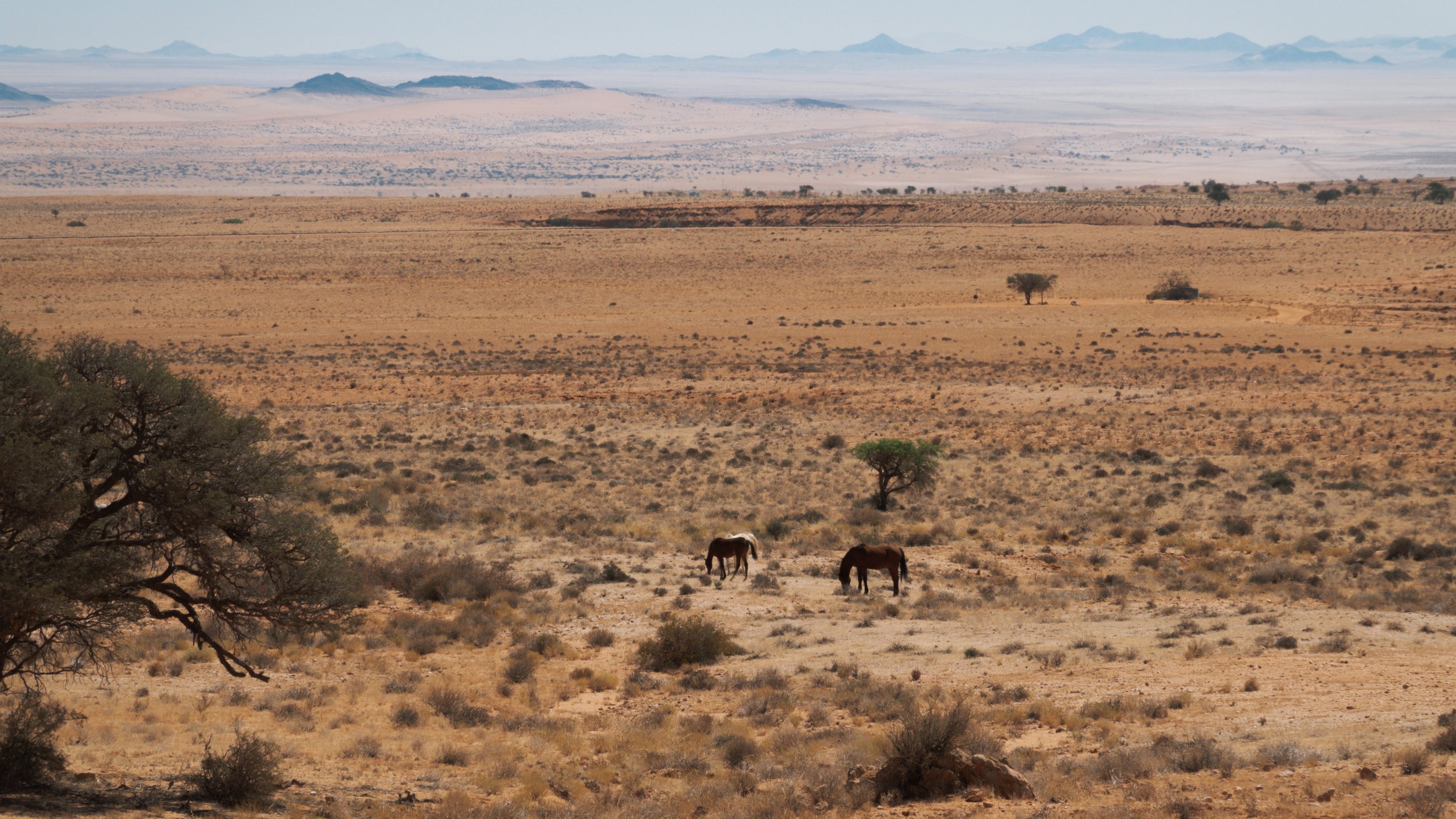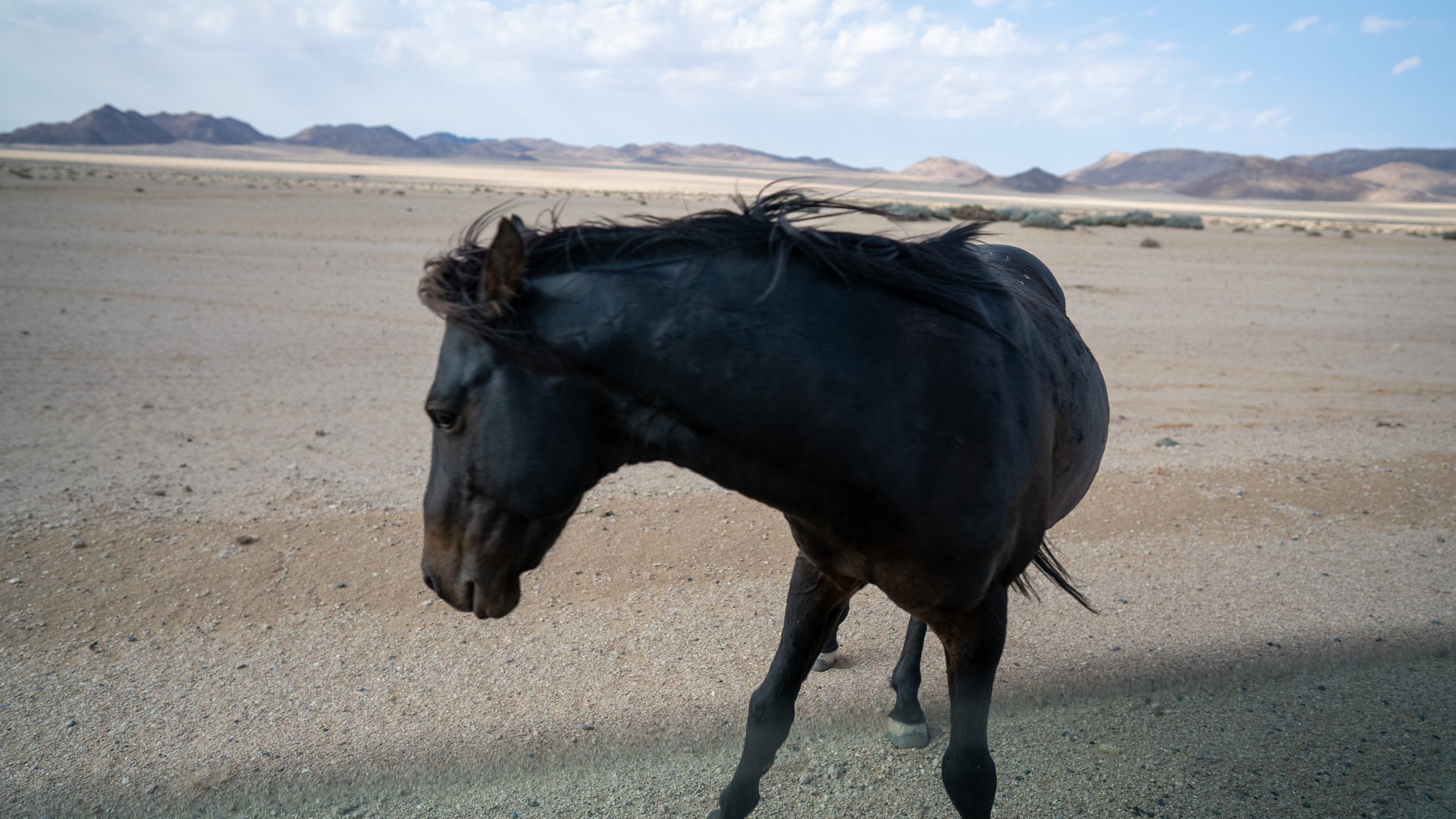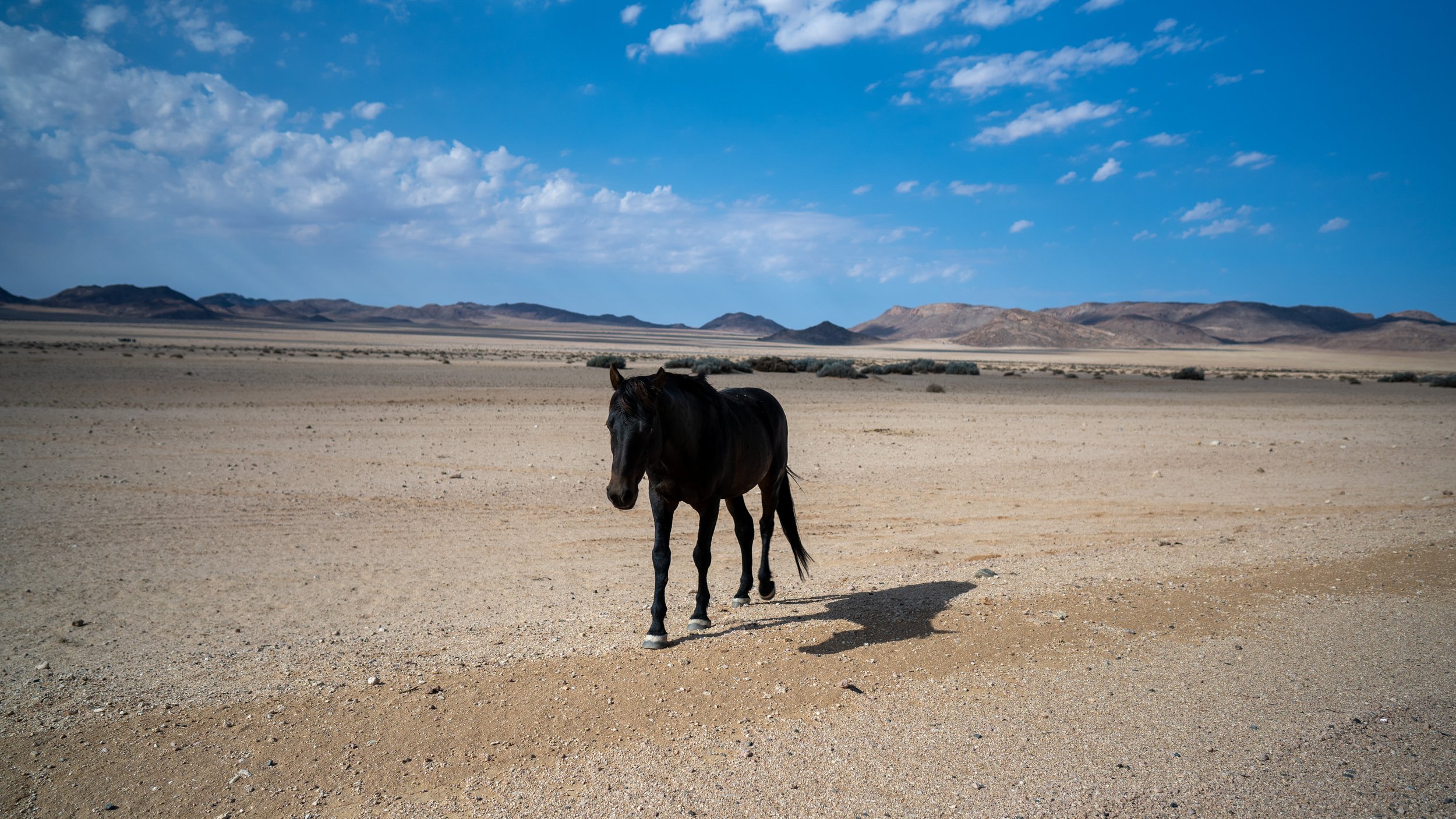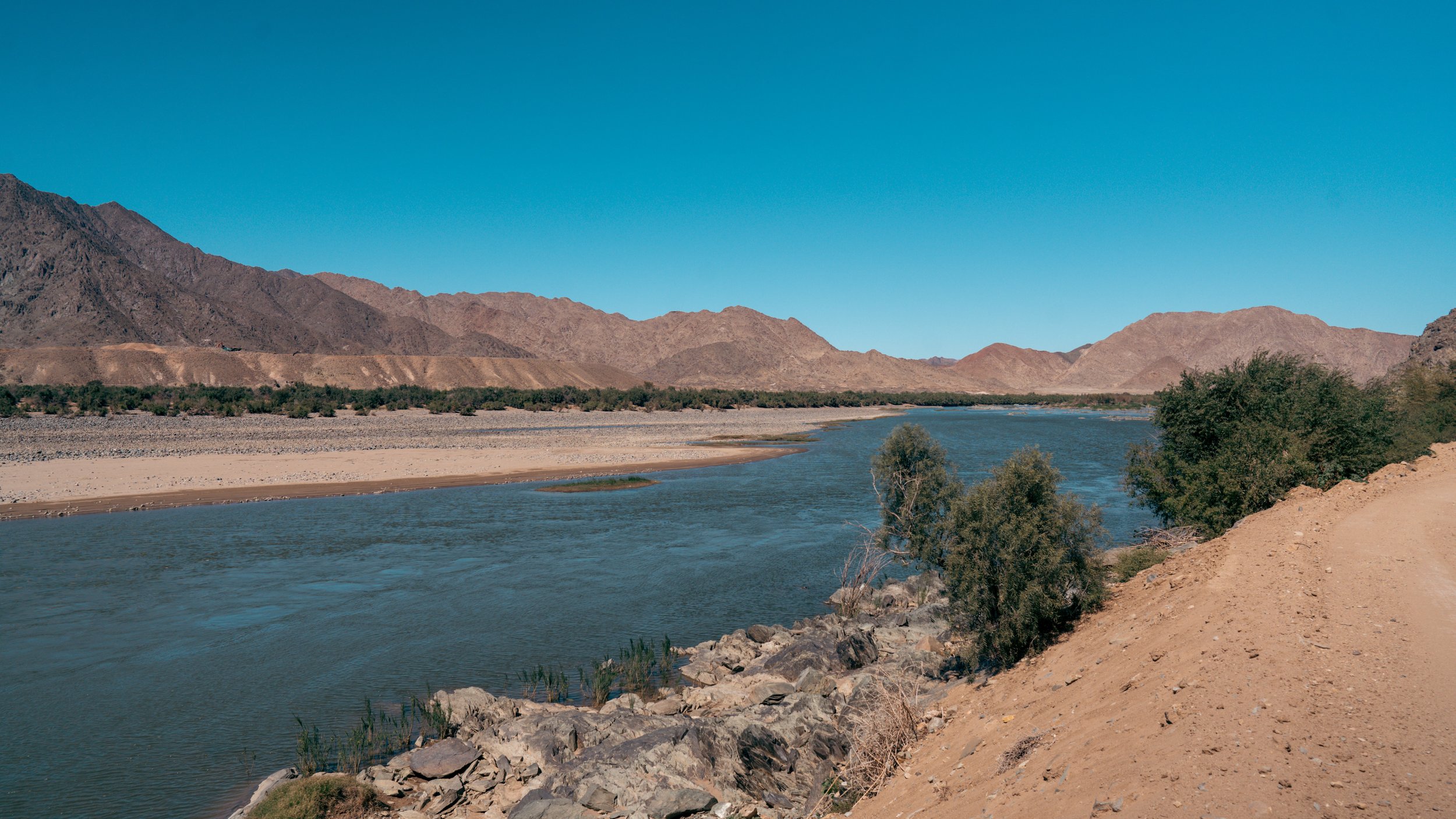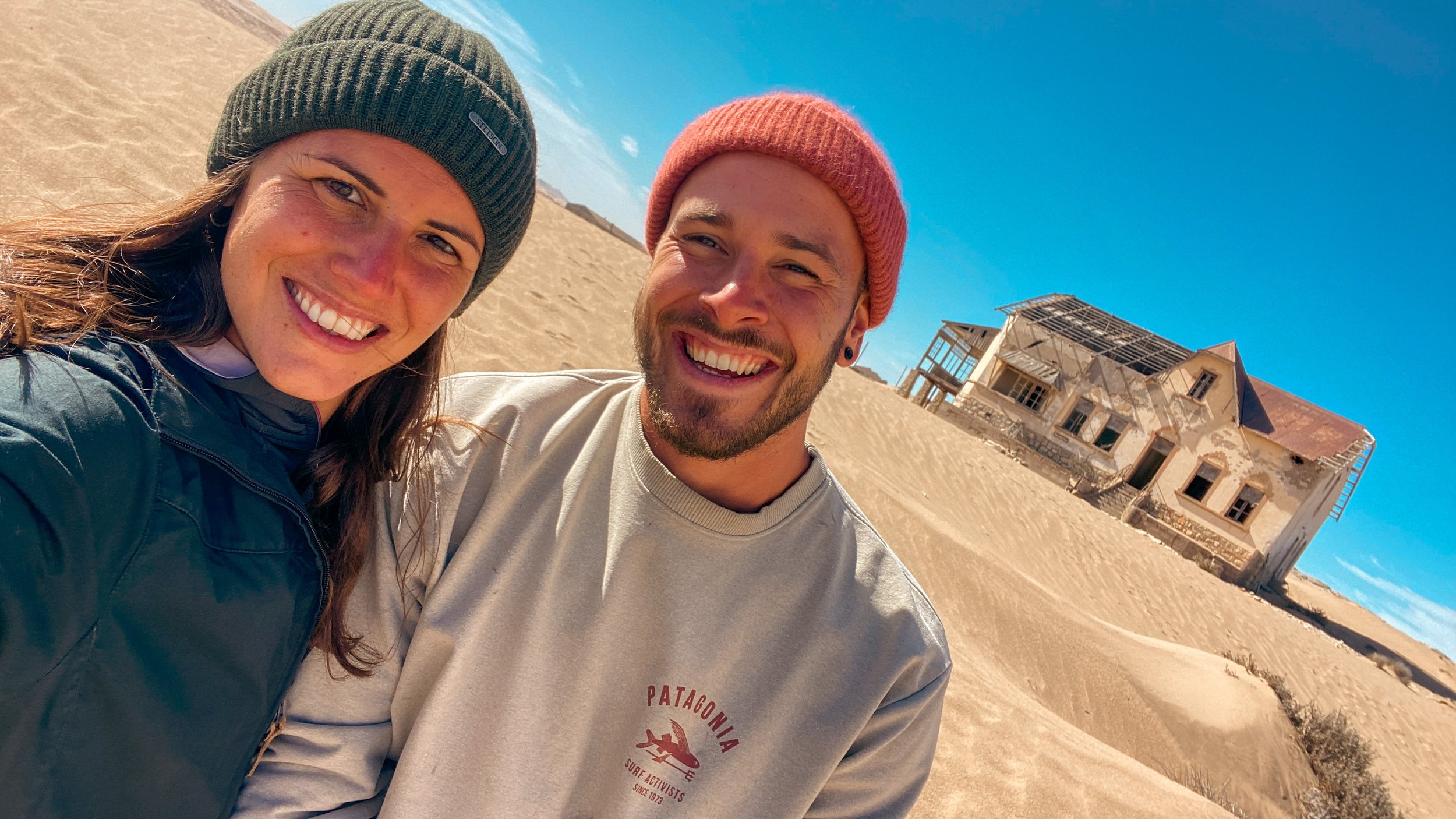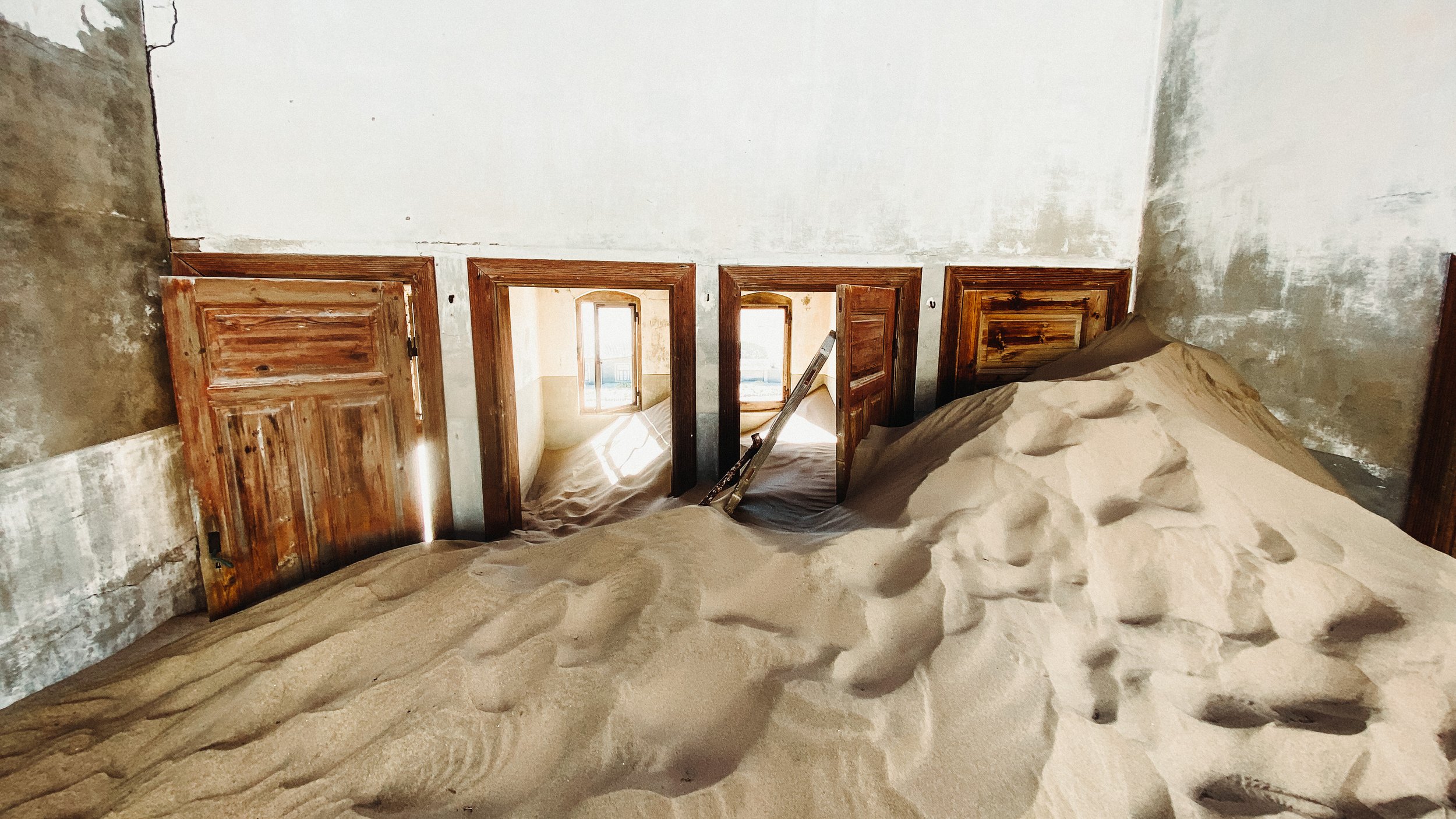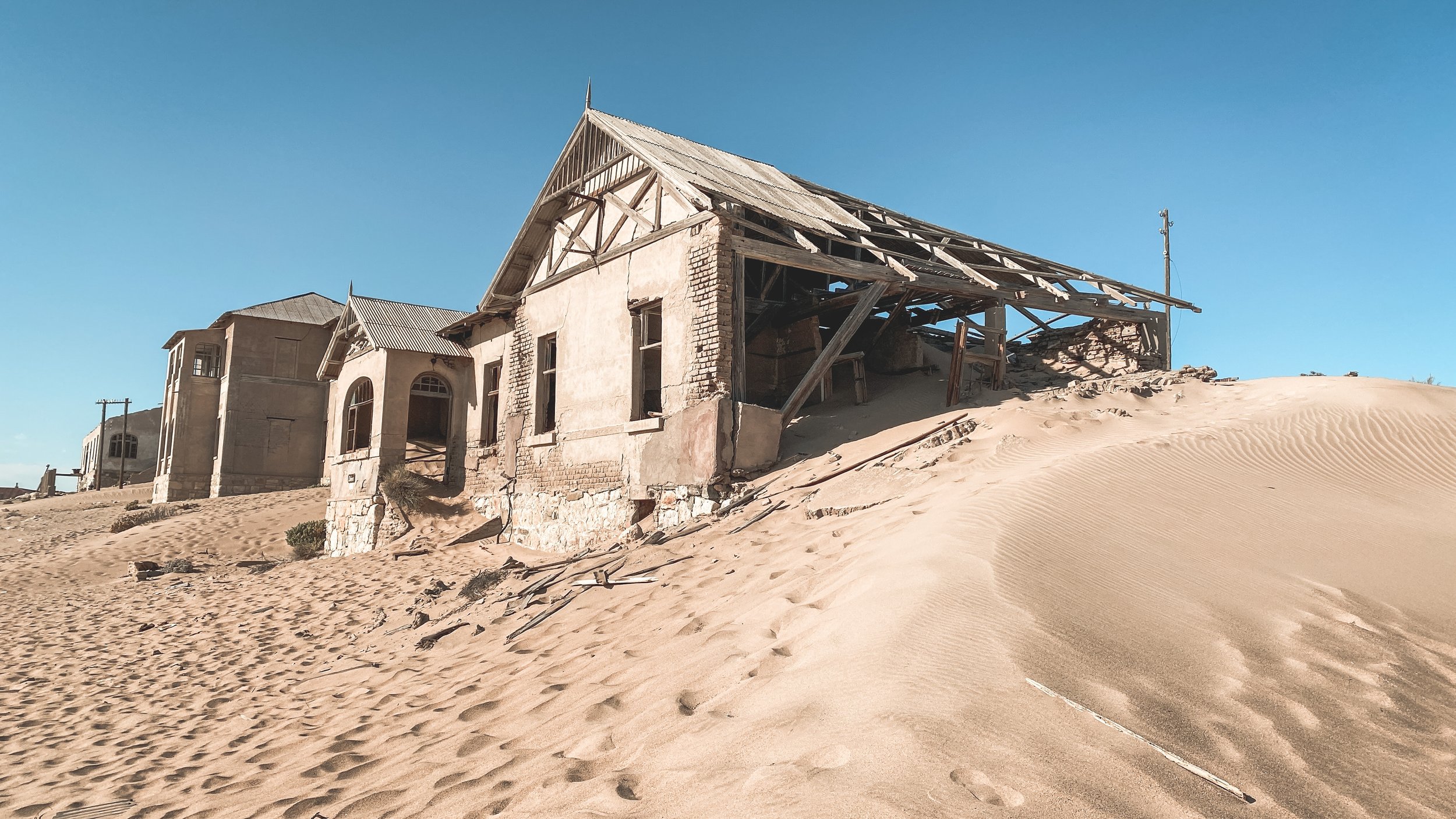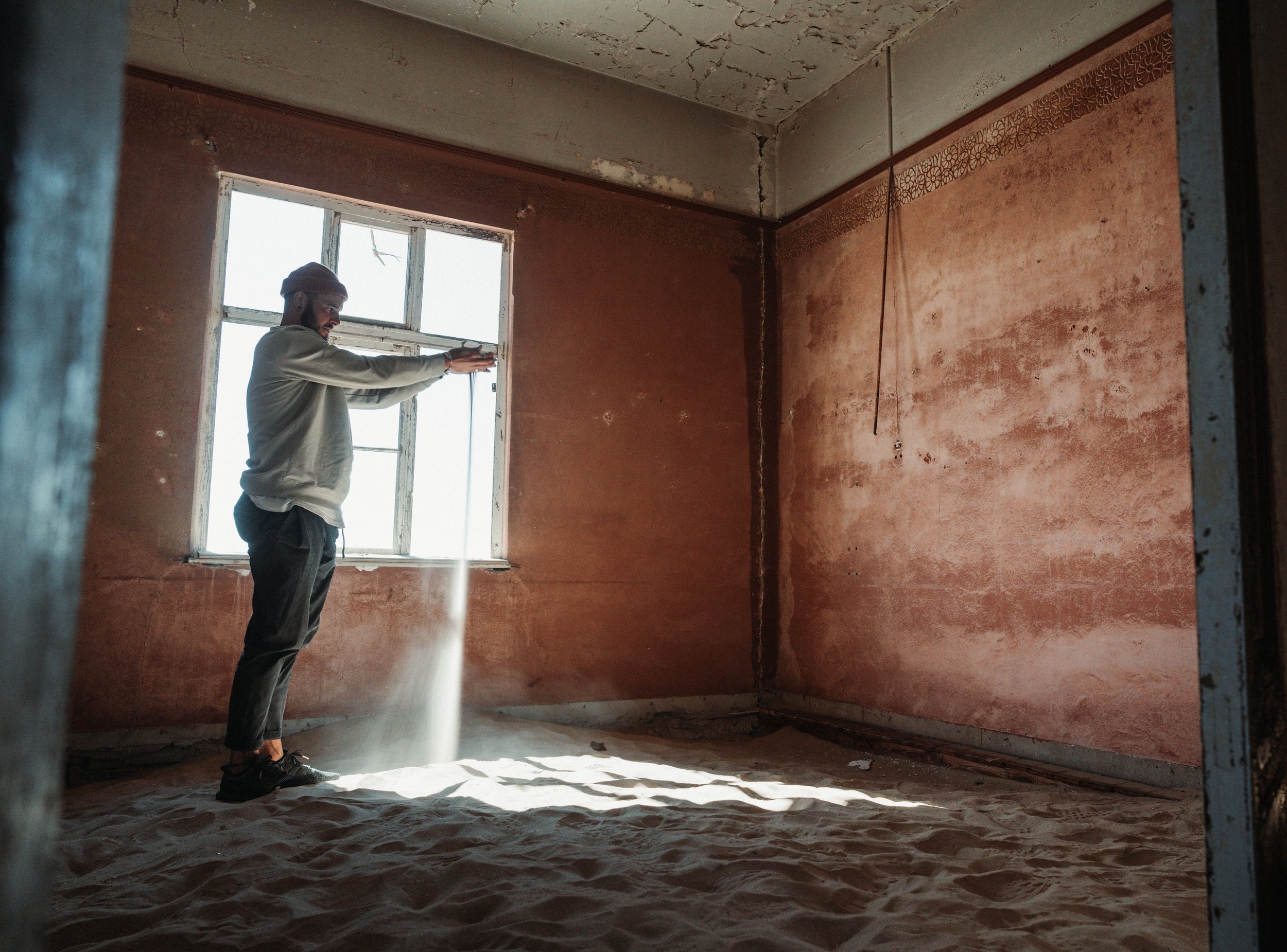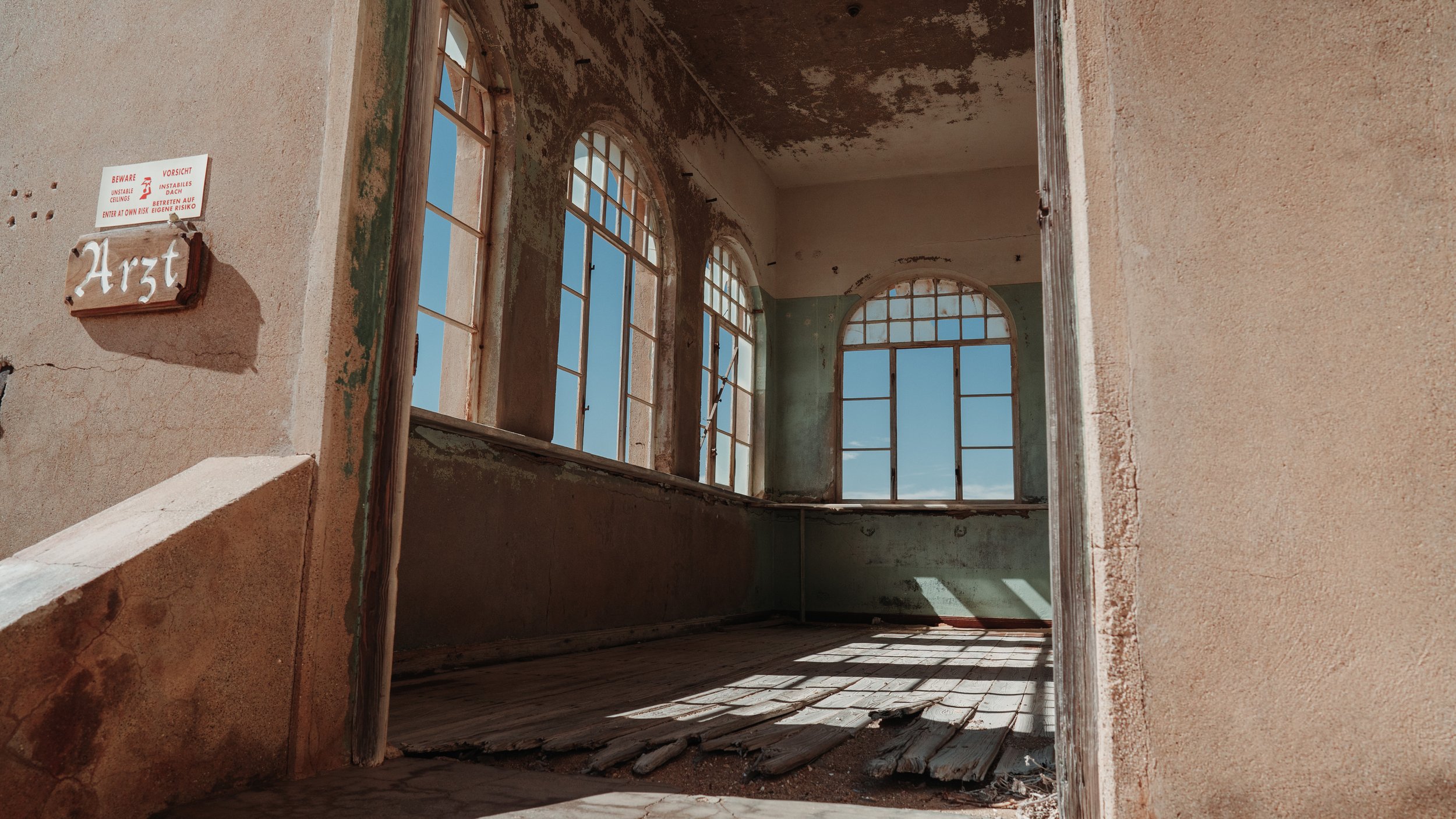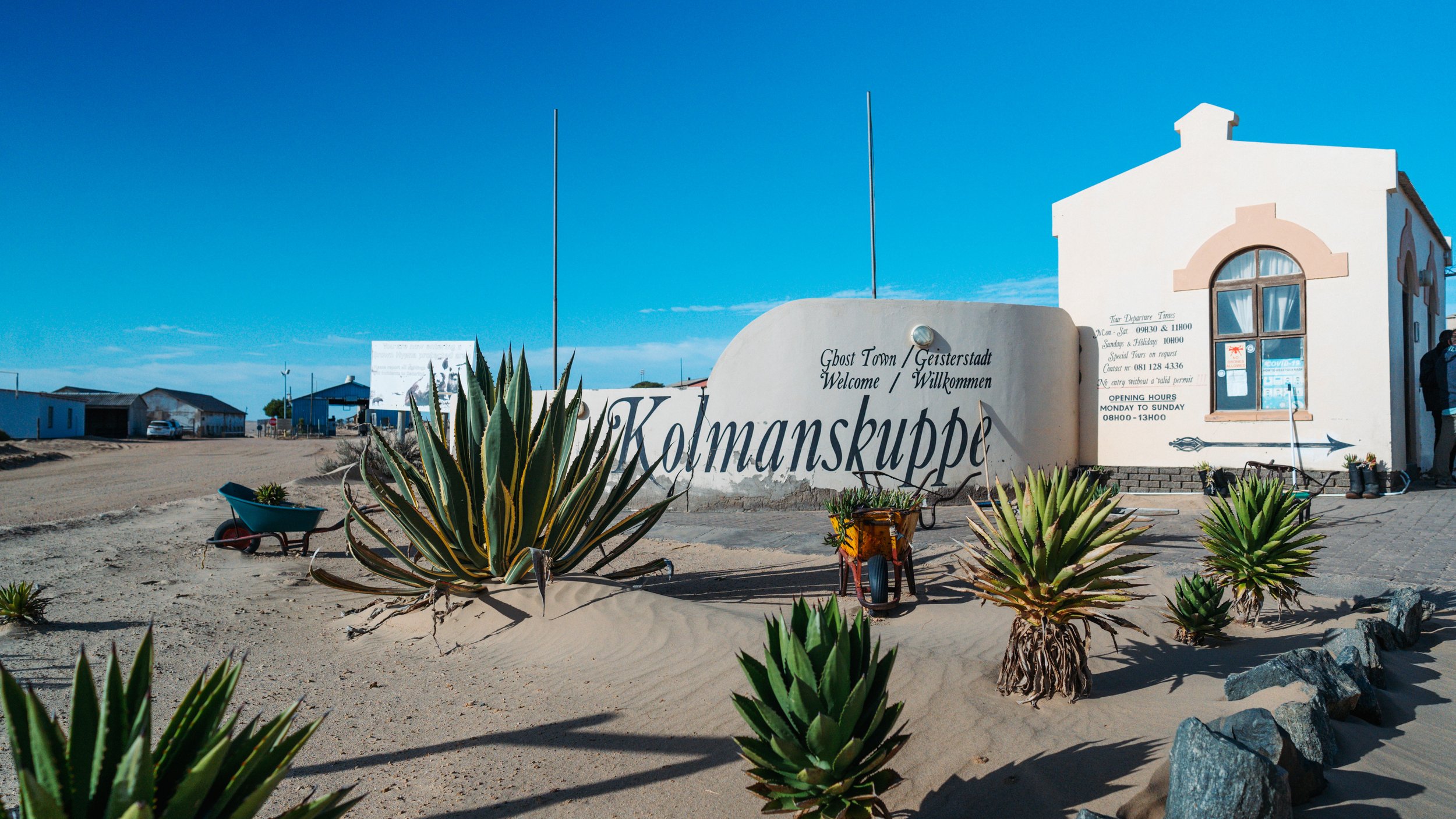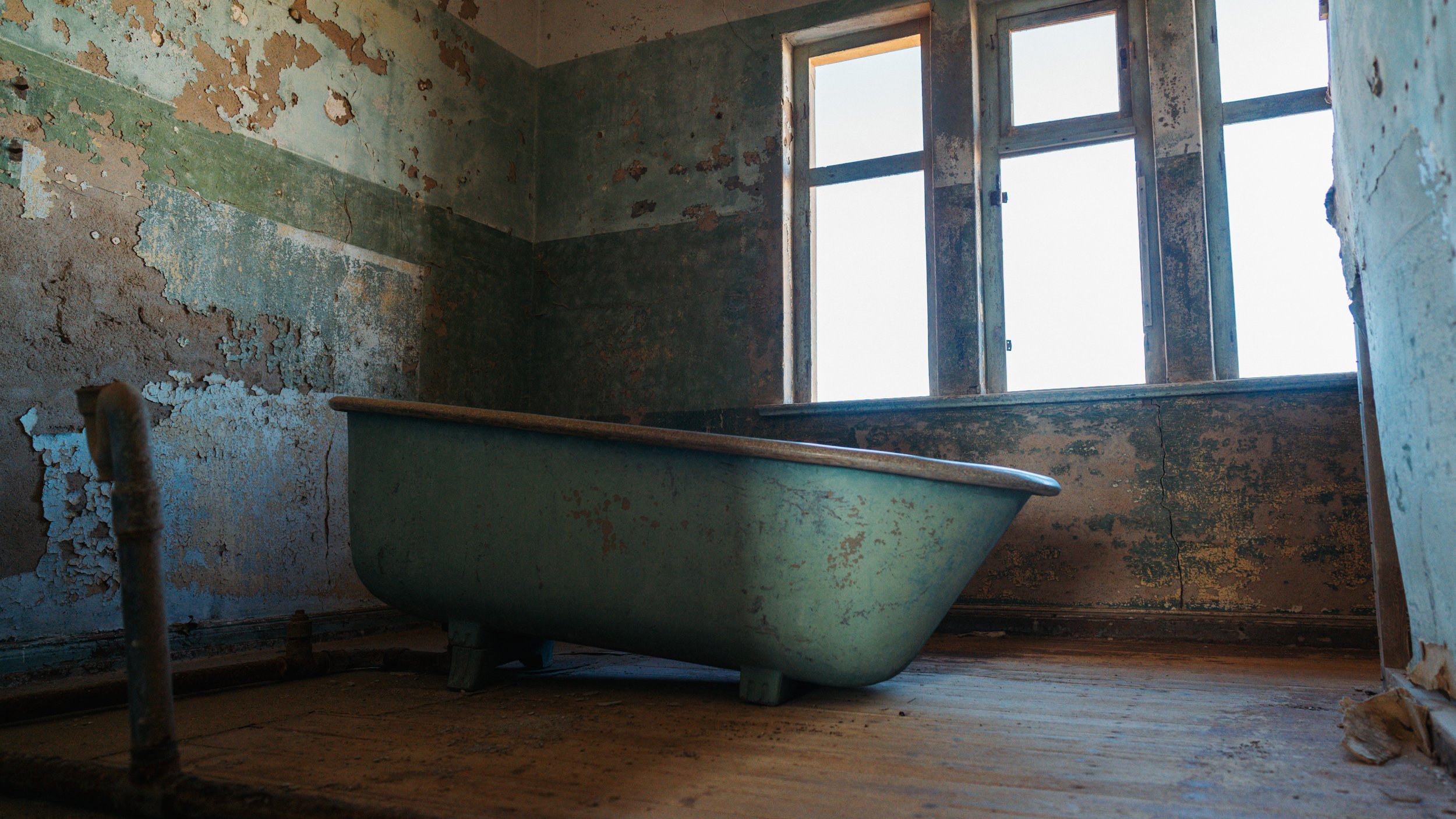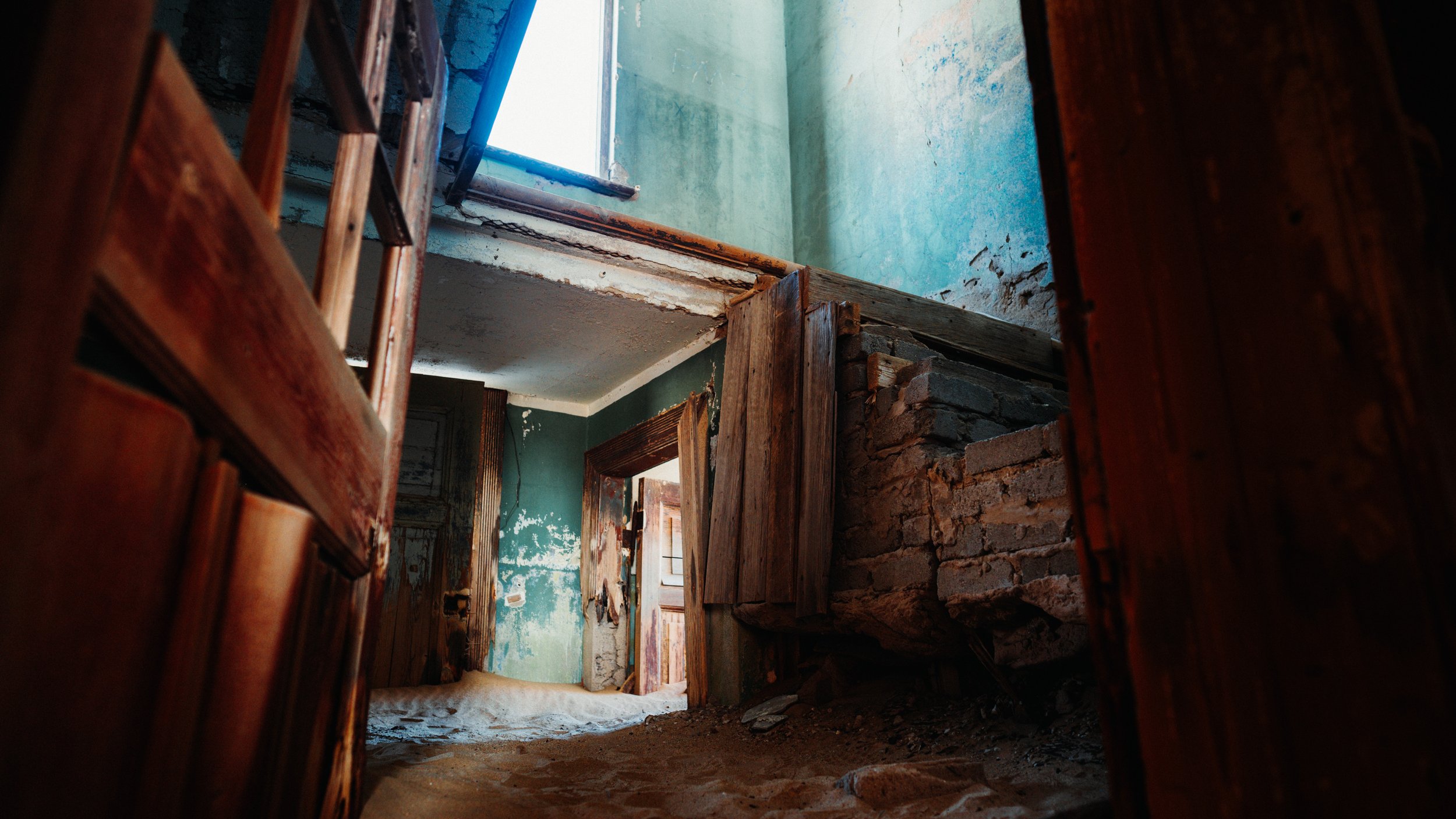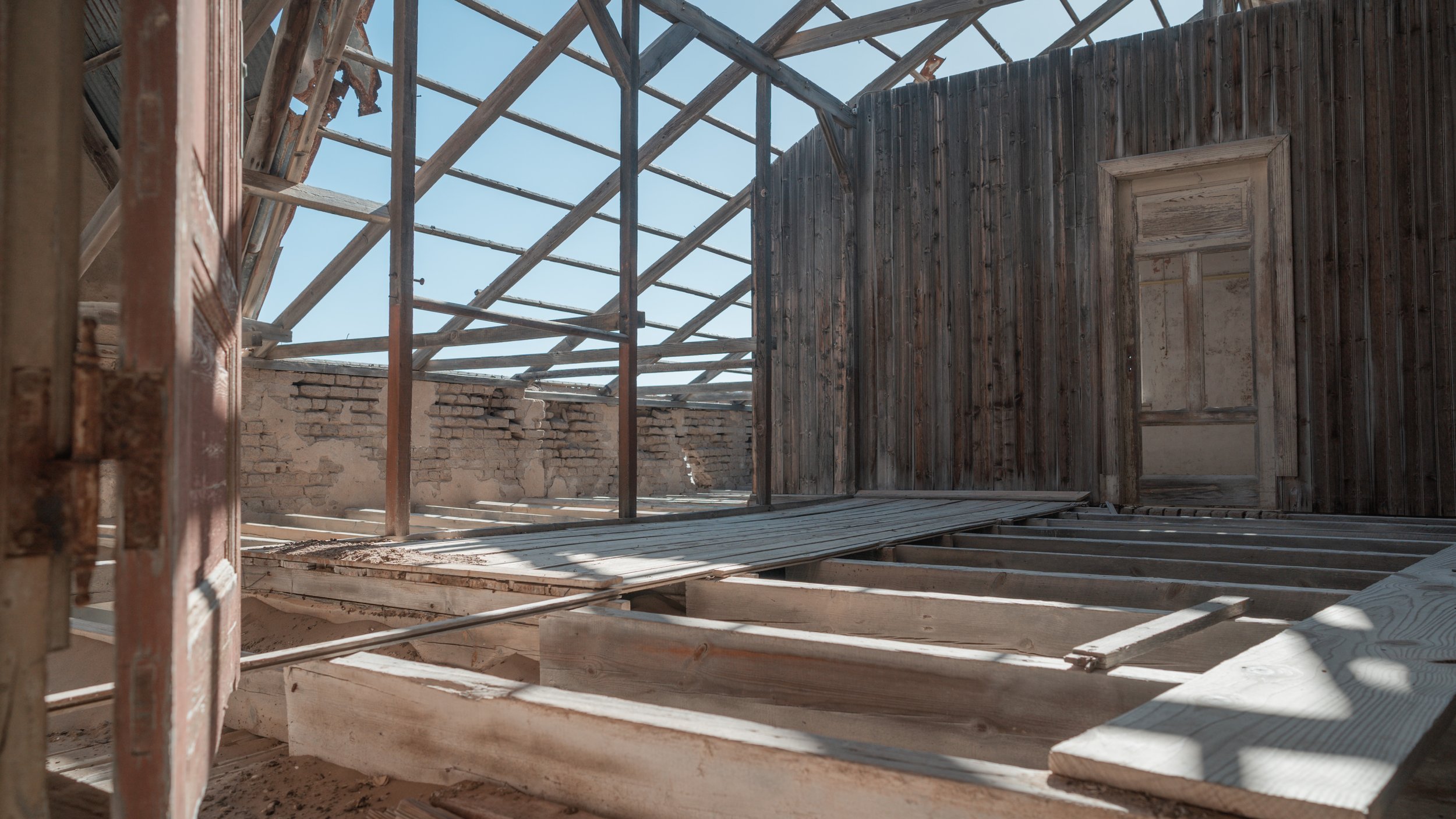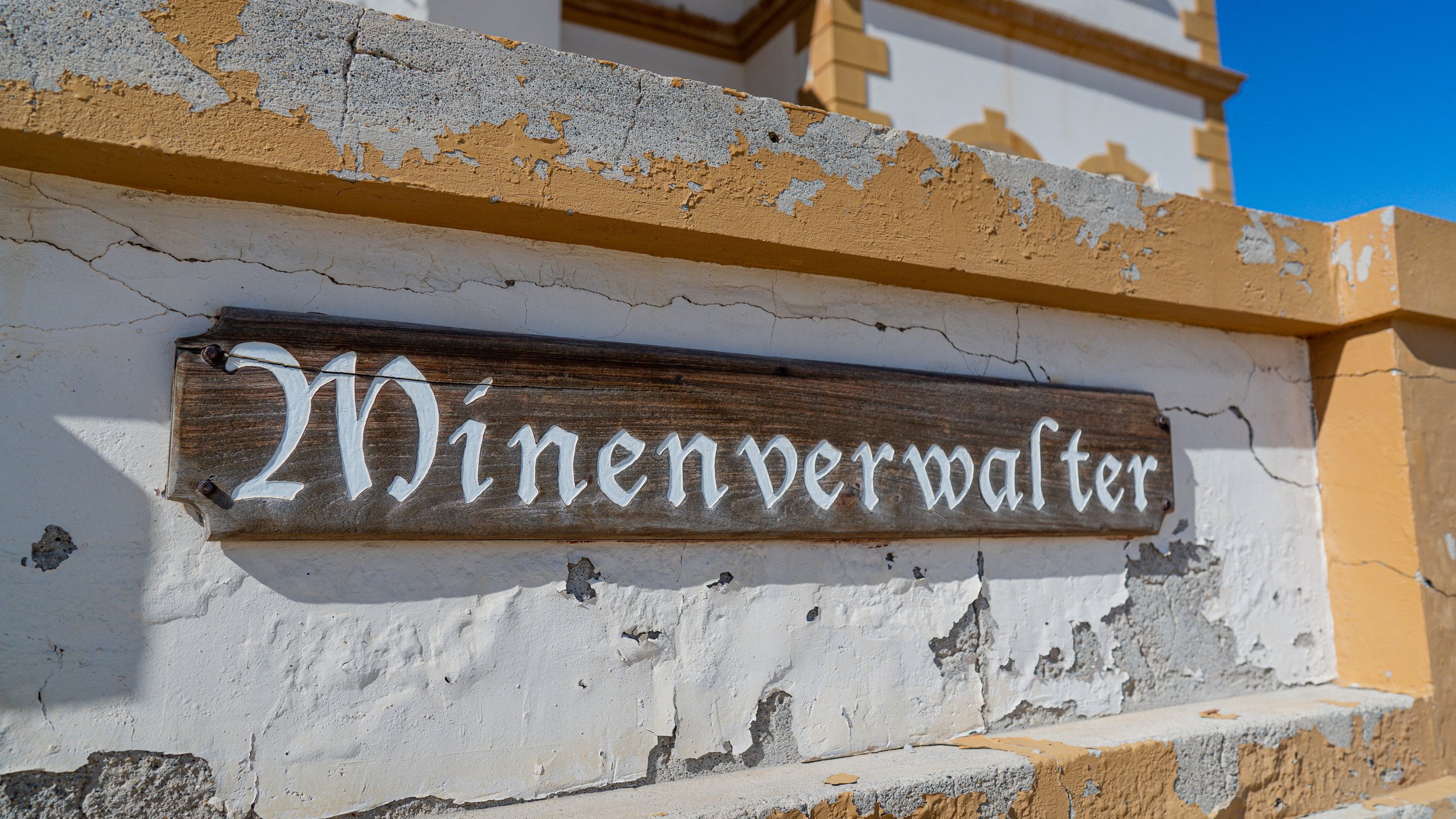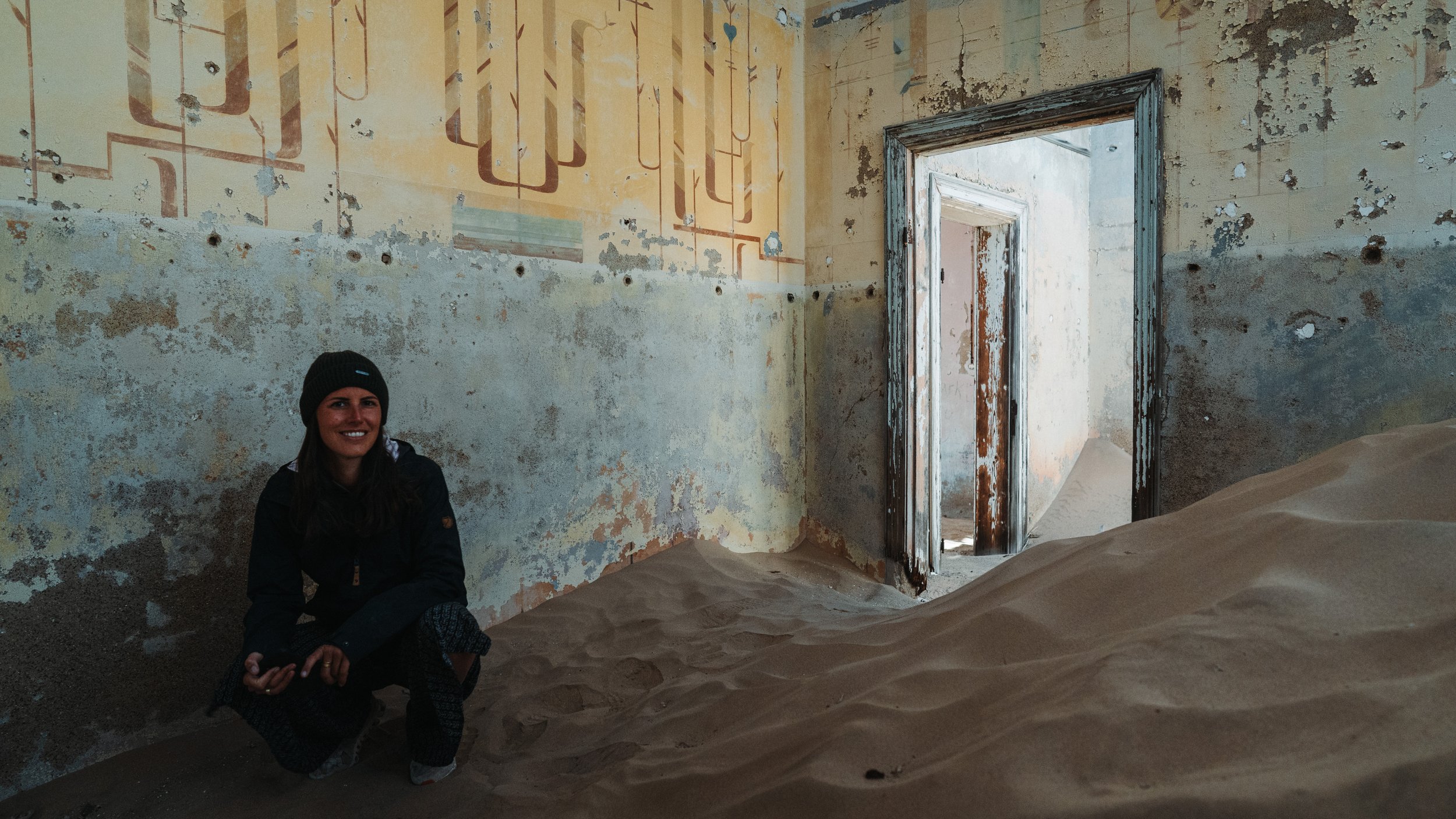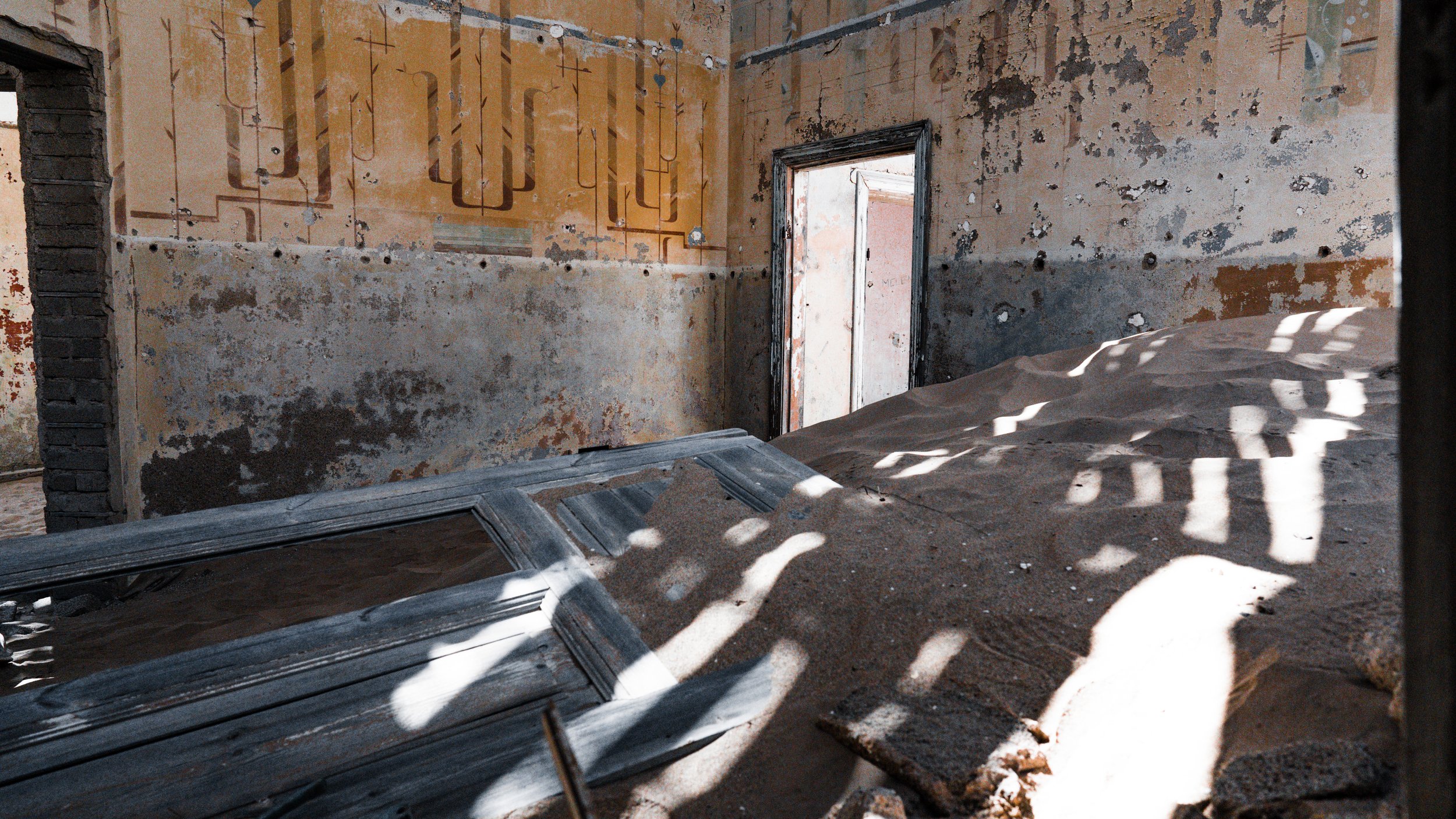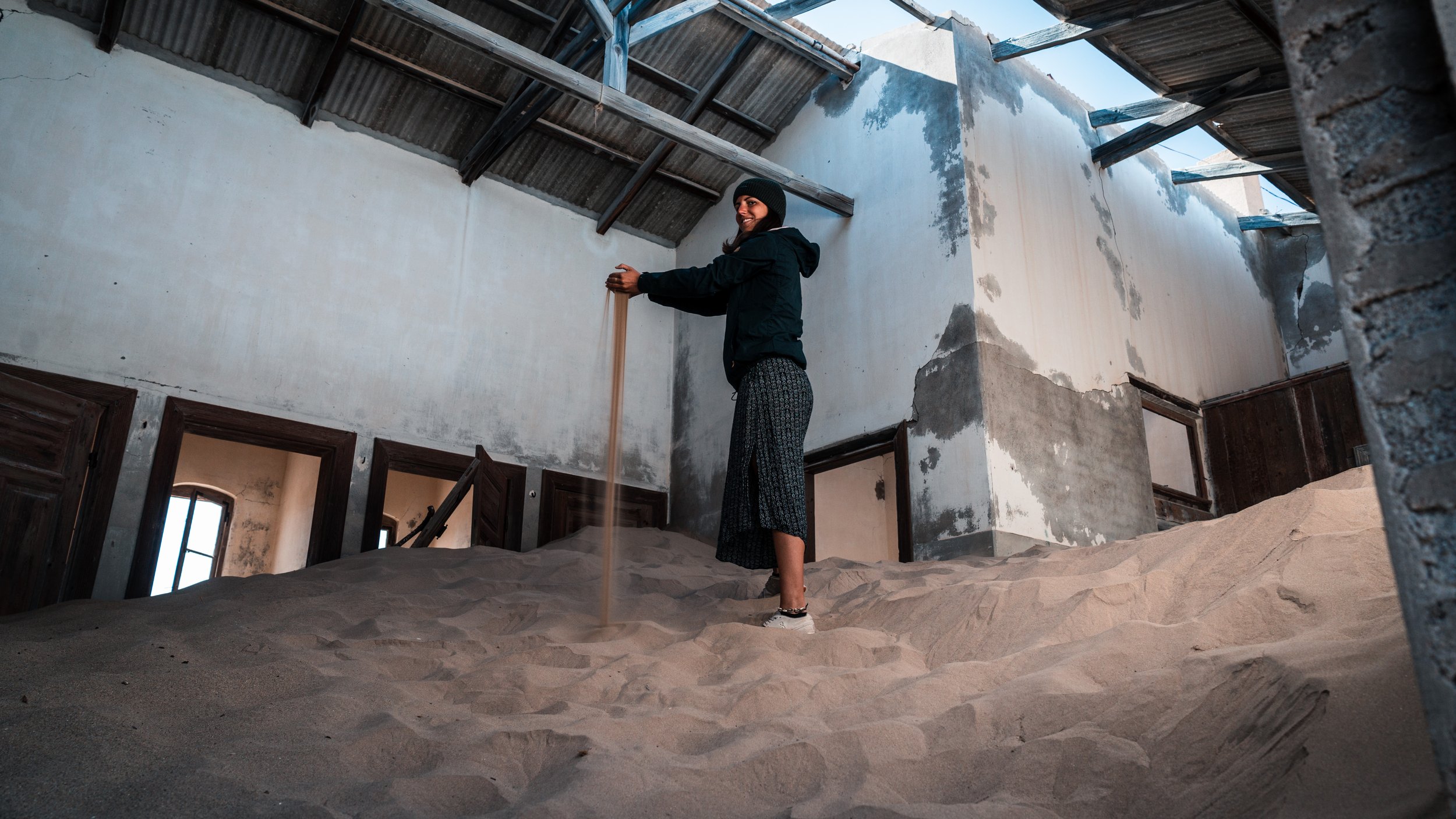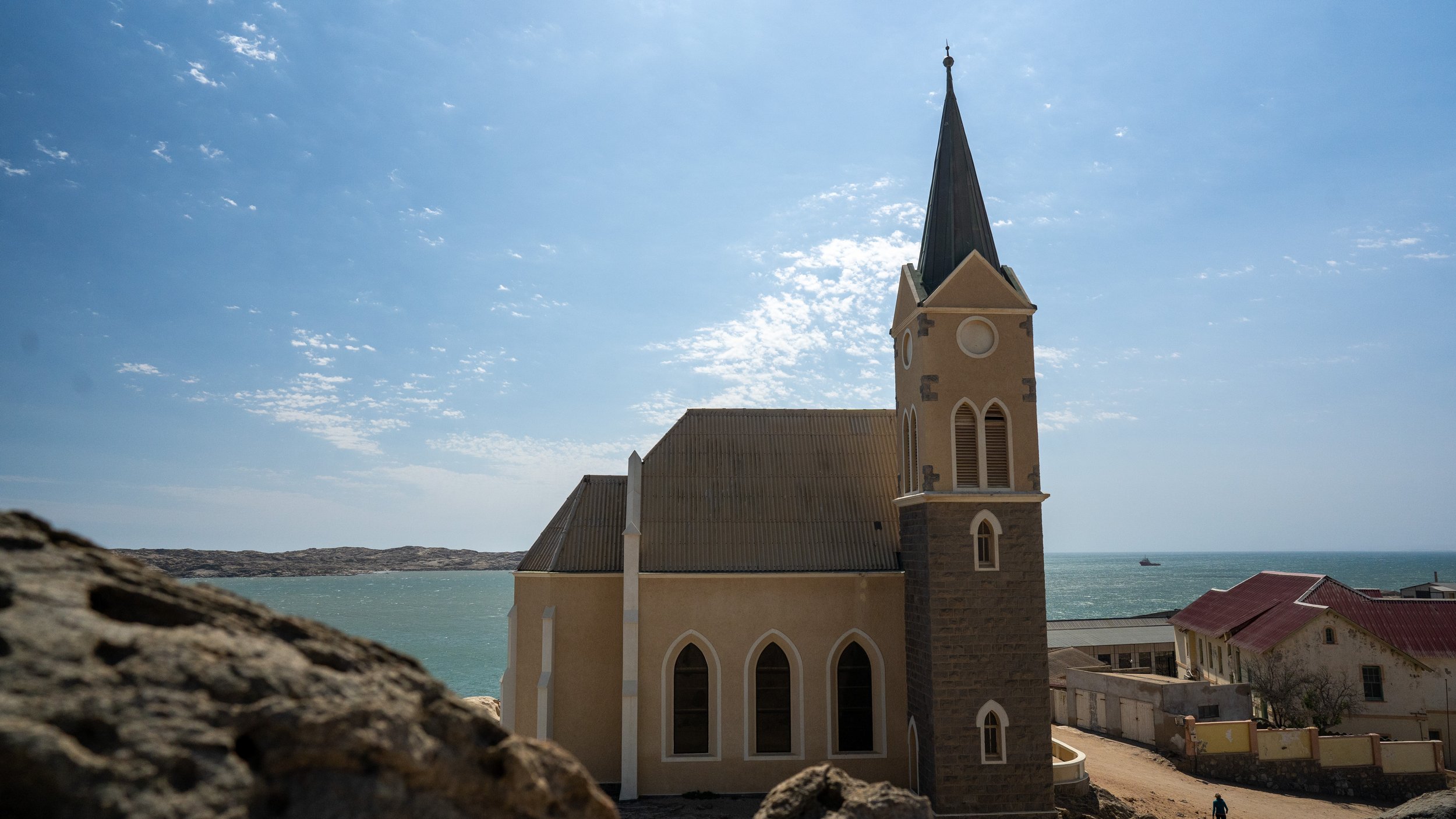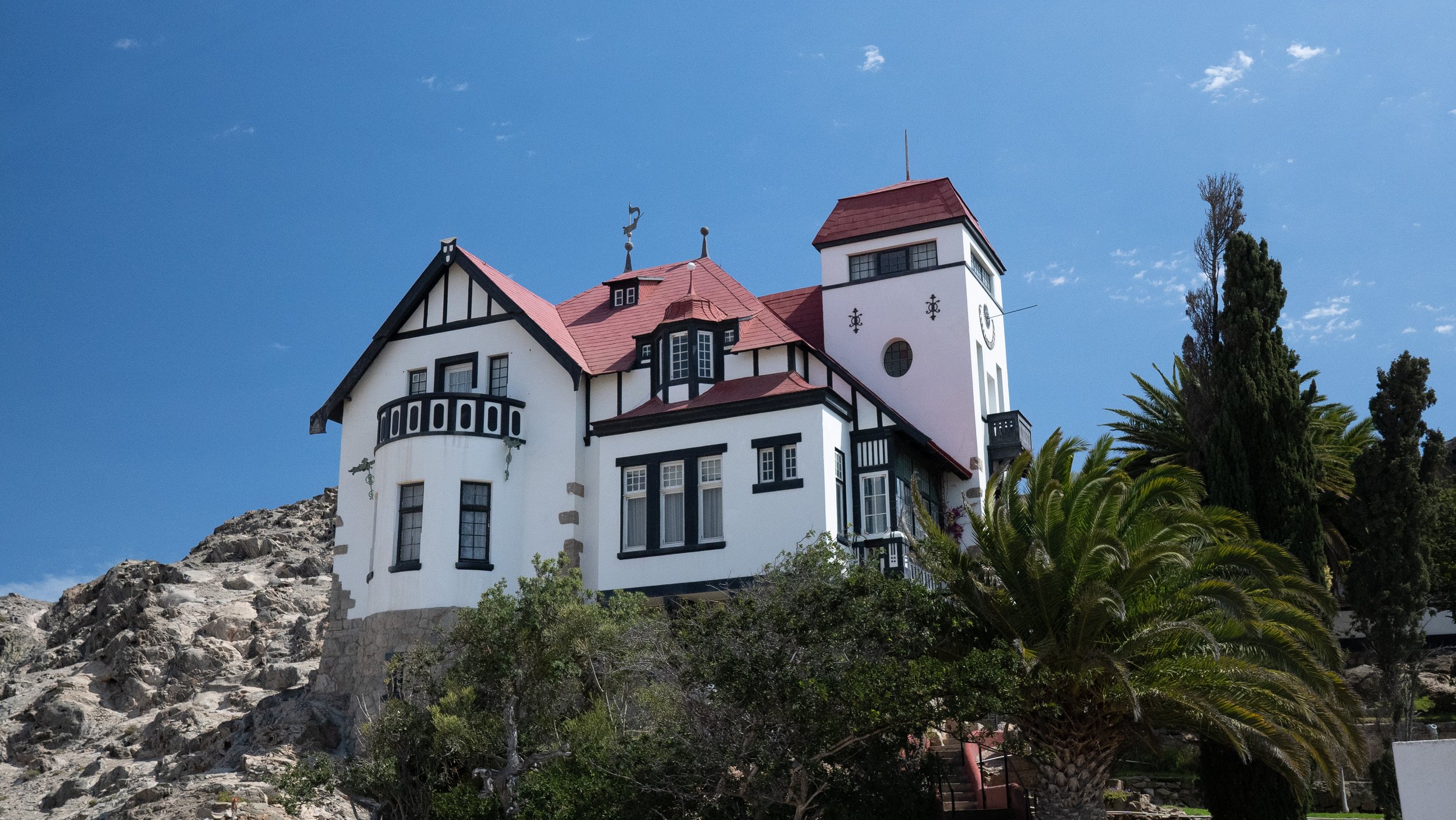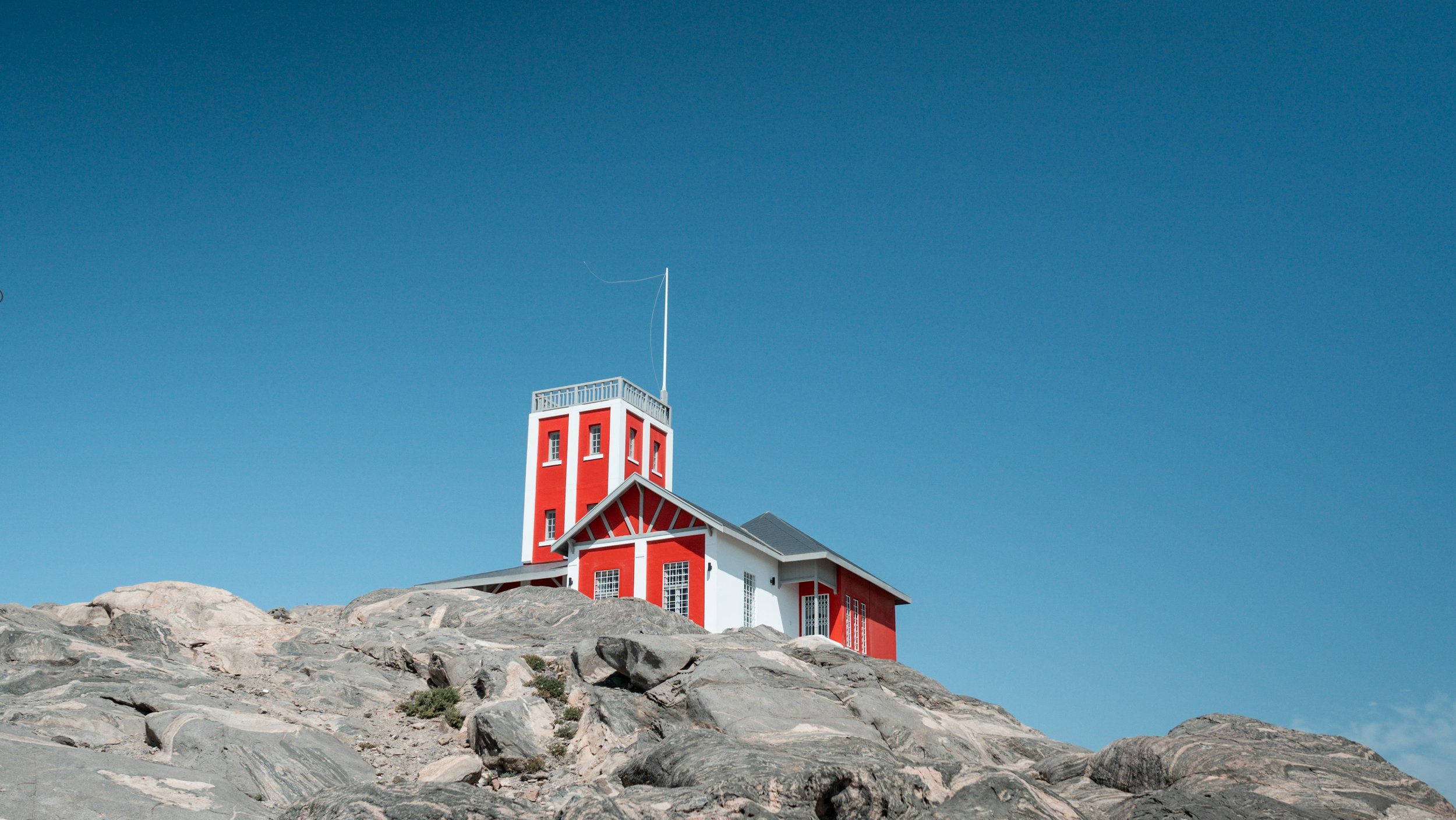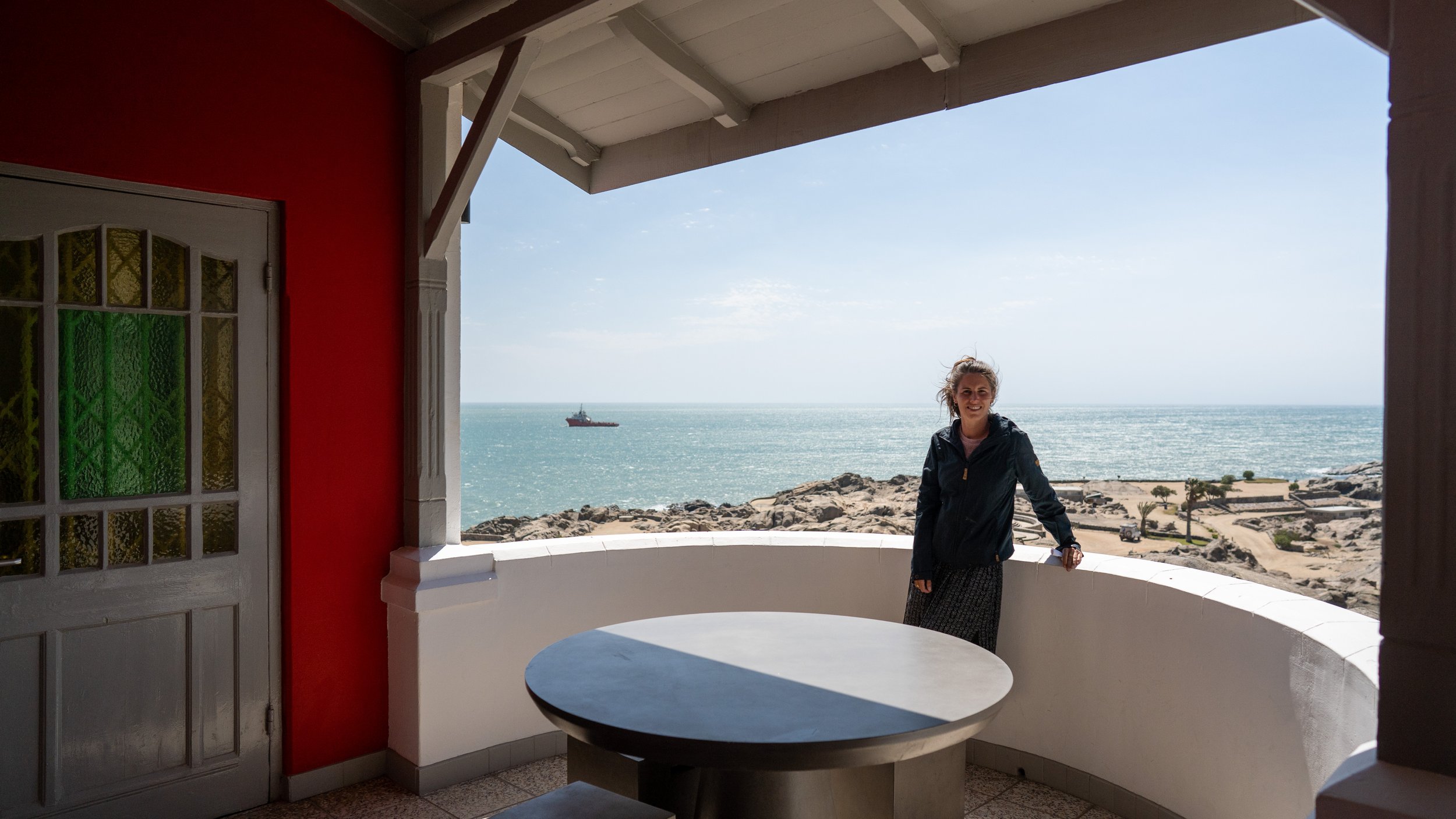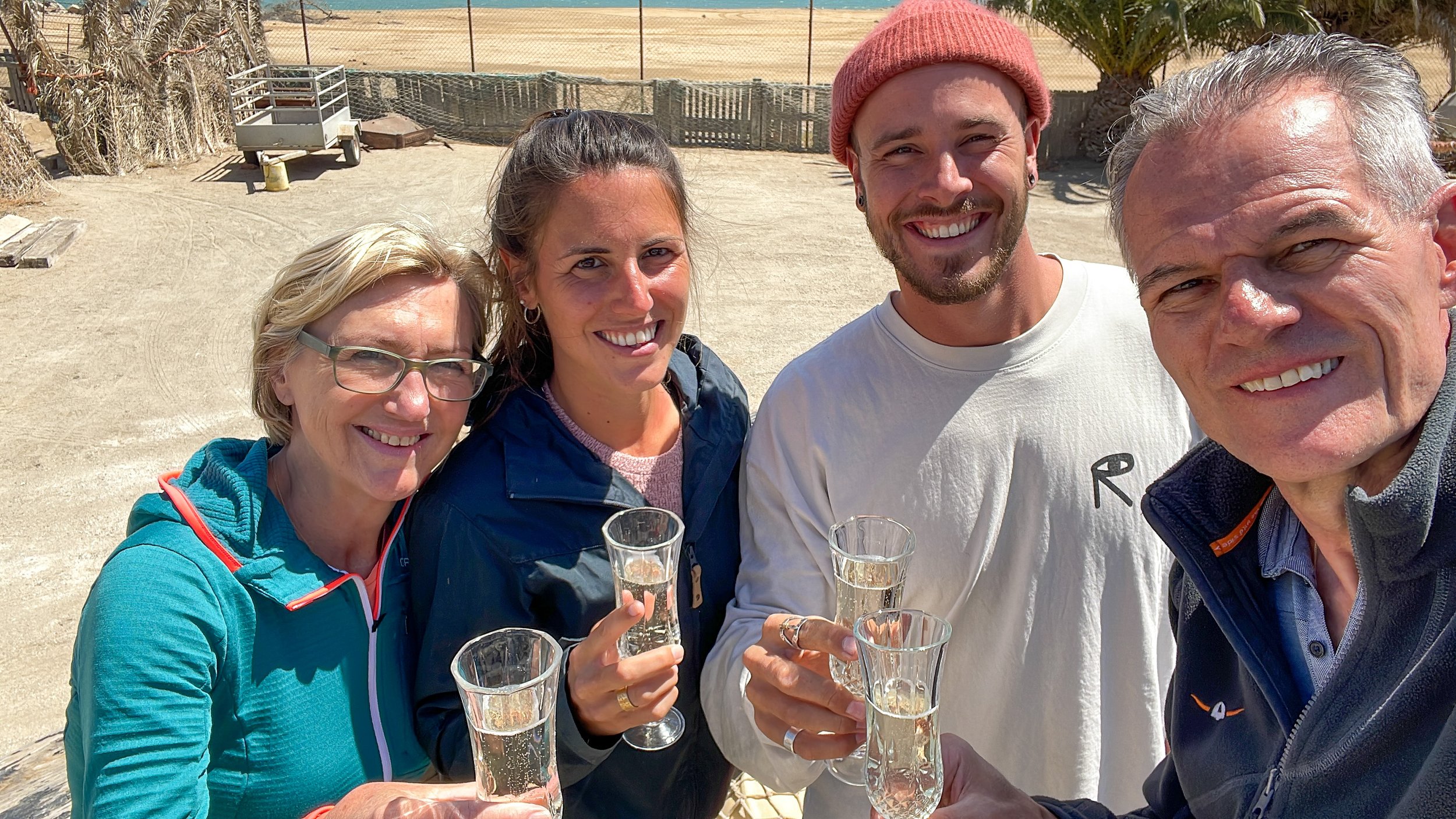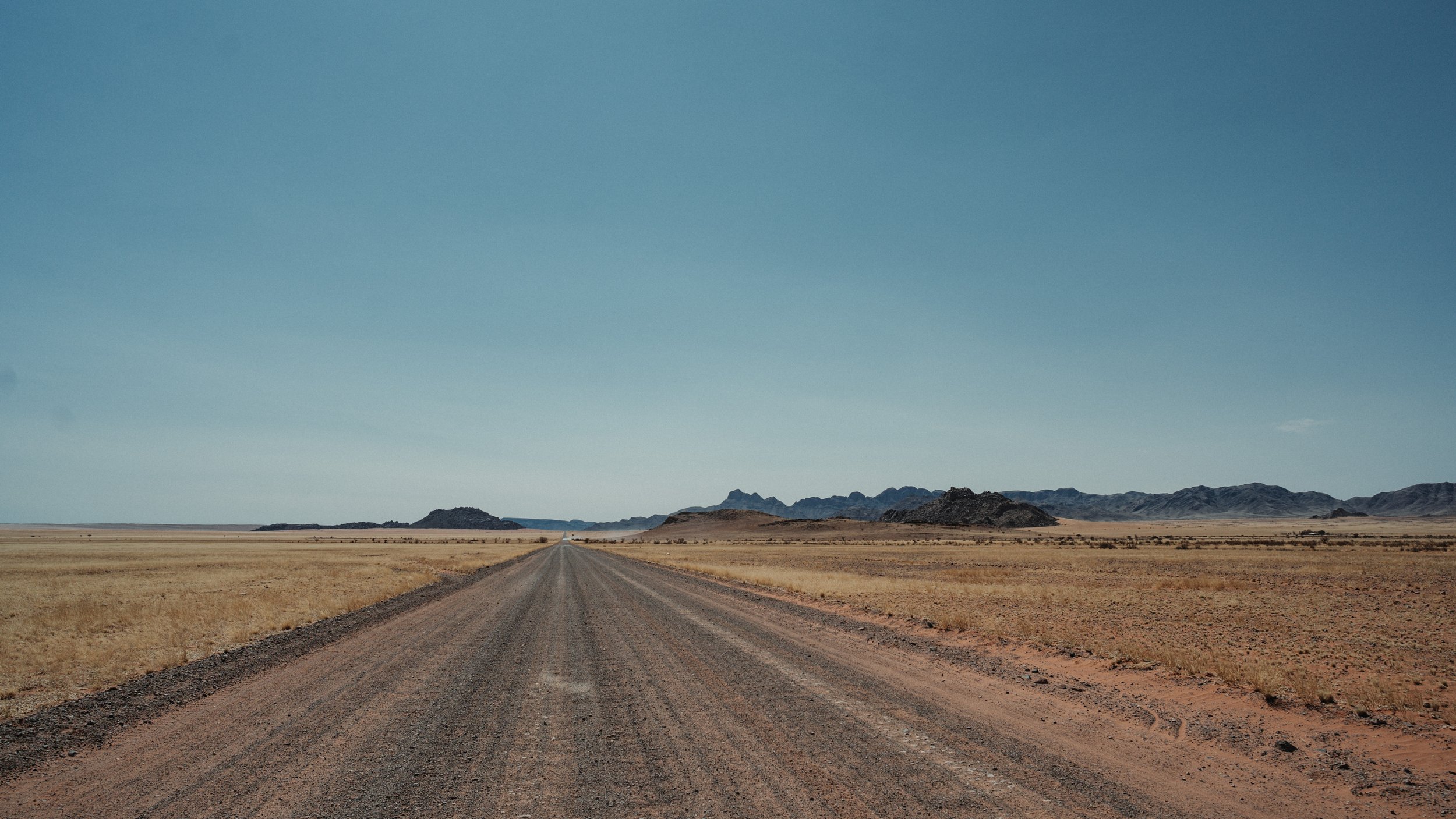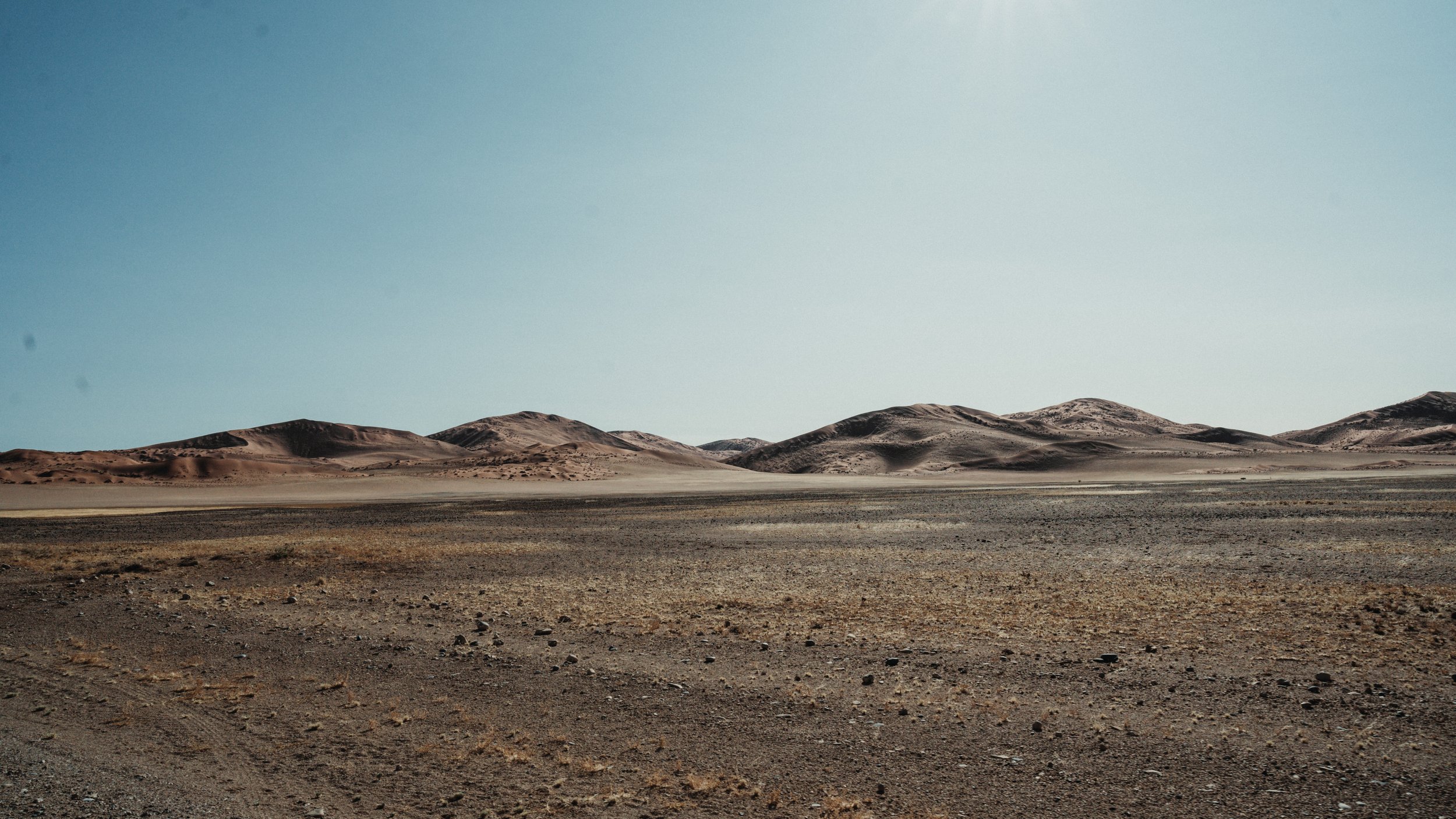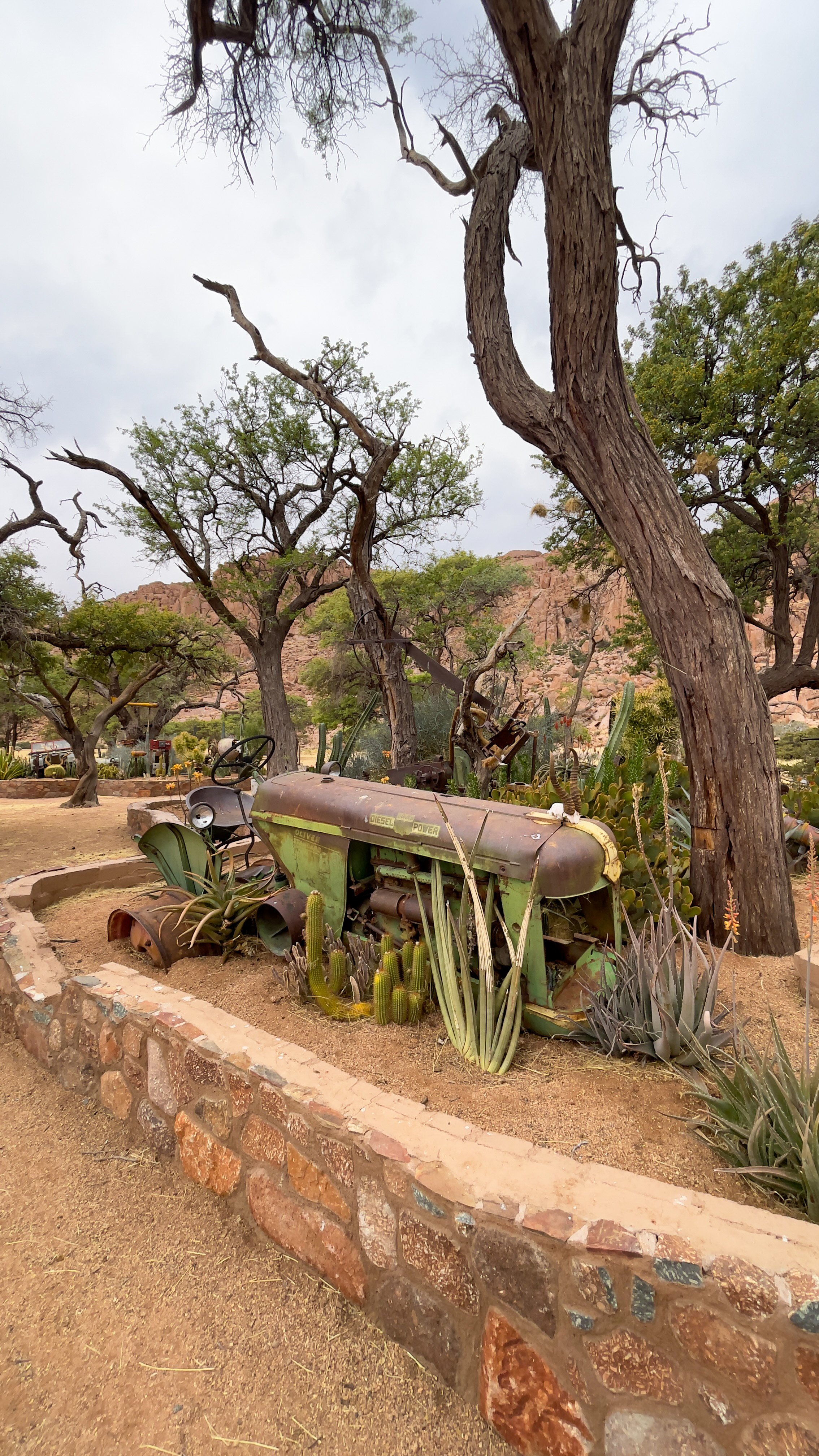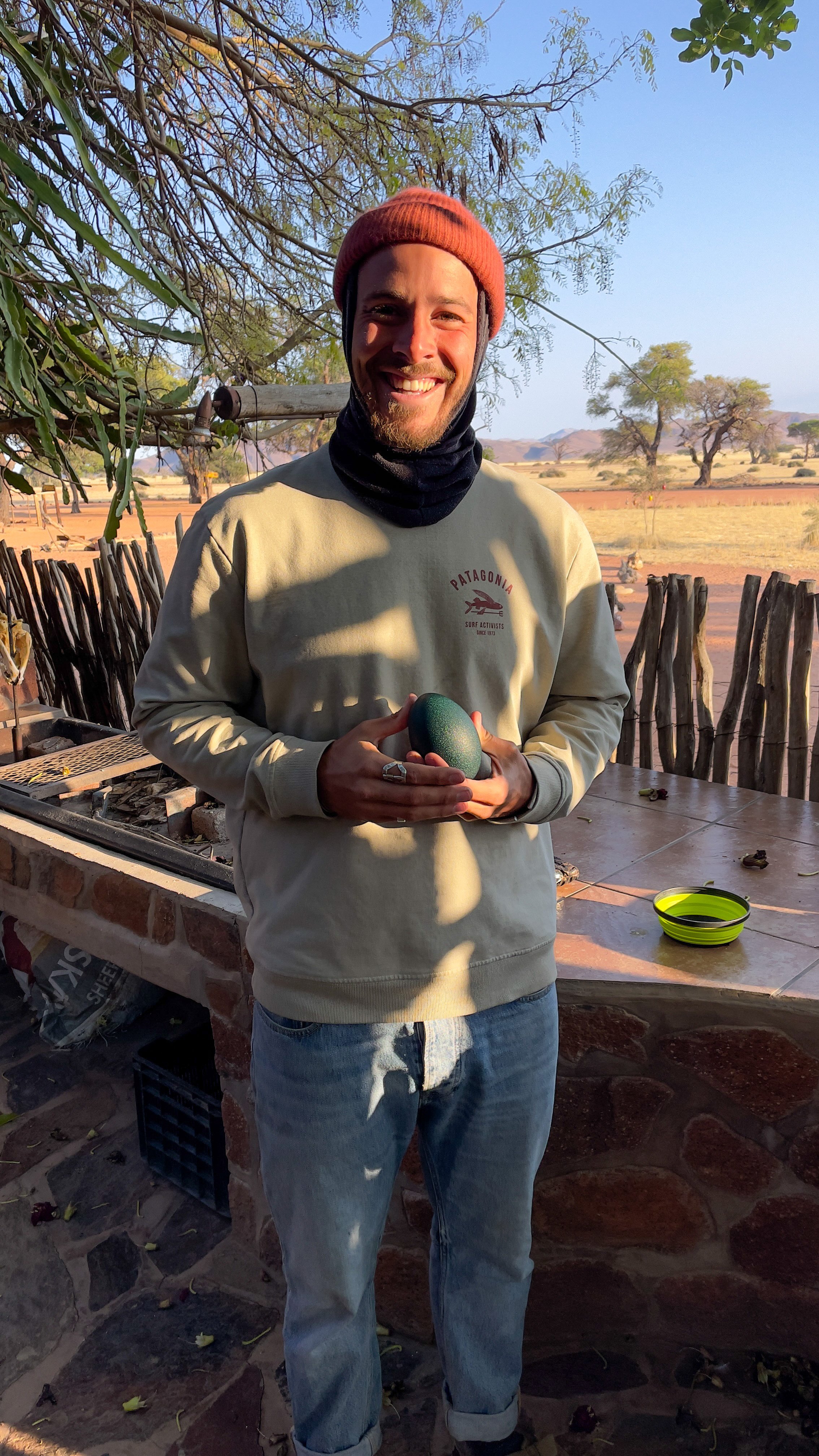After another short and easy border crossing, we entered Namibia. There is a tarmac road from the border all the way to Windhoek, and since we wanted to get some things sorted before Liv’s parents arrived, we headed straight to the capital city. On the way, we quickly stopped to get a sim card, which was also easy. Unfortunately, the data bundles in Namibia are limited to 3 GB and relatively expensive. Besides the lousy internet availability, this country surprised us with its excellent infrastructure. On the way to Windhoek, we made a short stop at “der Bahnhladen,” an old railway carriage which has been transformed into a little shop by the owner Bennie, an old and very friendly man who welcomed us warmly to Namibia and told us all his favorite and secret spots, which we should visit – and his tips turned out to be just excellent!
When we entered Windhoek, I must admit that it was a bit overwhelming. After spending ten months in Africa without visiting many busy cities and mostly staying in poorer countries, it was bizarre to see all the tall and modern buildings, the busy roads with traffic lights, and the shopping centers. Before we could go to the Urban Campsite, which lies conveniently in the city center, we had a mission to accomplish. Because we were too lazy to fix our awning on a sunny day in Botswana, the wind blew our full awning up and broke two poles and the joints where the poles were fixated. So we first visited a camper and 4x4 shop and hoped to find spare parts. They couldn’t help us and sent us to the next store, where we were not successful either. In the end, we got sent to Paco Engineering, a mechanic workshop, where they were super helpful and offered to make us new joints and straighten our poles. It turned out to be a lot cheaper than the spare parts would have been – another example of how you can get pretty much anything fixed in Africa rather than replacing it. Nevertheless, our first day turned out longer than we expected, so we went for dinner at the campsite restaurant instead of cooking.
We again spent our second and third days in Namibia at the mechanic shop. This time, we needed to replace our bushes, which must be done frequently, especially when driving on rough roads. We bought the spare parts at the LR parts shop and went to John, a Land Rover mechanic who was recommended to us. Unfortunately, the work took longer than expected, so we had to return the next day. On the bright side, Chad, a local guy and friend of John, visited the workshop the same day and offered to show us around town while our Defender got fixed. That was very convenient, because, without a car, you cannot get anywhere in this city. We made our first stop at a barber shop for Tom after Liv got a haircut the previous day (it was more than time after almost 12 months.). We then went to check out a few stores and went for a little brunch at the Stellenbosch Tasting Room, a nice restaurant in town that is not only serving wine. Chad also showed us his house, in particular his garage, where he is fixing up old motorbikes. Tom was super impressed with all the lovely old bikes standing there 😊 After getting our laundry done, we could return to John’s workshop and pick up our car. We returned to the campsite, where someone was already waiting for us. Darren, the guy from New Zealand, traveling solo in his Defender and whom we met in Botswana, was at the same campsite. It was nice to meet him again, and of course, we cooked dinner together and shared a few beers and experiences from the past weeks. We only had one day of doing nothing before Liv’s parents arrived the next day. Time flies, and when overlanding, there is always something to organize or get done.
Roland and Evelyne (Liv’s parents) arrived the next day. From the airport, they went directly to pick up their rental car (and home) for the next four weeks – a Landcruiser with a rooftop tent. We reserved the campsite next to ours for them and had a warm welcome when they arrived. Besides many greetings from back home, they also brought us two full bags of presents and things we ordered ourselves, which we could not get in Africa. So our first day was spent unpacking presents while Roland and Evelyne got settled in their car. Tom and I already went to the shops to get everything for a nice braai for our first night. We also invited Darren, who was helping us to install an inverter for the car battery, which we had ordered in Switzerland. Unfortunately, this turned out to be another mission, and we couldn’t just easily install it but had to get some extra parts the next day again; luckily, we had an extra day in Windhoek to get everything sorted. Nevertheless, our first night together was very nice, and we enjoyed each other’s company a lot.
Before we headed into the wild Namibian landscapes, we had to fill our fridges and plan the route and, therefore, went on a shopping trip altogether. Tom also found the missing things we needed to install the inverter, while Roland and Evelyne could buy some things they needed for the trip. I had prepared a meal plan and organized our shopping tour through the huge Superspar in Windhoek, where you can get everything, which is perfect for starting a trip like this.
For dinner, we went back to the Stellenbosch Tasting Room Restaurant and enjoyed a very delicious dinner with some nice bottles of wine. Because they were so good, we bought three cartons to bring along on our road trip… essentials! :D
Our trip started, and we first headed south on one of the few tarmac roads Namibia offers. We, therefore, chose to make a big stretch on our first day and drive to Quivertree Camp, 5ookm away from Windhoek. We crossed the Tropic of Capricorn on the way, made a short lunch break, and arrived just in time at the lodge before feeding their two cheetahs. They rescued them as babies, and because it was tough to bring them back into the wild, they stayed at the lodge. The campsite was another kilometer away from the lodge in the middle of the Quivertree forest. Golden hour was just about to start, so we took the chance to take some very cool pictures of the famous trees. We prepared a nice dinner, and Roland and Evelyne spent their first night under countless stars in the middle of nowhere. They enjoyed it a lot and even arranged themselves with the shared toilets and showers 😊.
Only a few kilometers from the Quivertree Campsite, there is the Giant’s playground, an area with funny rock formations that look like a giant had left his toys lying around. We decided to get up early the next morning to visit this place before sunrise, which was absolutely worth it.
From there, we continued further south to reach the Fish River Canyon, the world’s second-largest canyon. Along the way, we stopped at the Naute Kristall Cellar and Distillery, where they produce nice gin and even better brandy, but since it was still in the morning, we opted for some coffee and cakes instead of the gin-tasting. We then continued through the fantastic landscape; I was impressed with the scenery, and the roads were surprisingly good for gravel. We stopped at the Canyon Roadhouse for Lunch, a nice restaurant and relaxed place to make a stop; we even got to fill up our diesel tanks at their fuel station in front of the lodge. We then drove to the Fish River Canyon and went to all the different viewpoints. It’s a genuinely breathtaking canyon. We took some pictures and read about a 5-day Hiking Trail you can do through the canyon, which Tom and I found very interesting and immediately put on our bucket list. Unfortunately, due to the weather, the hike is only open in winter (May to early September), so besides not having the time this time, we were too late anyways. But it sounds great, and we’ll hopefully be back one day to do it.
We initially planned to drive to the Ai-Ais Hot Spring Campsite to spend the night but then decided to wild camp. Tom and I were pretty surprised that my parents agreed to this already on their 4th night in Namibia :-D We found a beautiful spot hidden from the street behind some hills and enjoyed a braai and some excellent wine under the stars.
The next day we drove all the way to the Oranje River, which borders South Africa, and then headed north again, where we stayed at the Klein-Aus Vista Lodge Campsite for two nights. On our “day off,” where we did not have to drive anywhere, we went for a hike and even spotted some wild horses along the way. I liked the scenery in the south of Namibia a lot; the landscape is extraordinary.
The next day, we had a bigger mission. We first drove to Kolmanskop, an abandoned mining town close to the coast, just a few kilometers before Lüderitz. German miners lived here in the early 20th century, driven by the enormous amount of valuable diamonds. But already in the early 1920s, the town declined again when the diamond fields started to deplete. Today, the ghost town is a tourist attraction and a great place to take some fantastic pictures. Have a look yourself:
For a late lunch, we drove to Lüderitz and enjoyed some seafood at The Portuguese Fisherman Restaurant, which was delicious. We also had to open a bottle of prosecco and call my brother, who was turning 30 on this day, while his whole family was in Namibia. (Of course, we will all celebrate with him once we meet again.) We did a little tour around Lüderitz and visited the Shark Island Lighthouse, a historic place. During the German colonial years, there was a death camp on the island where close to 1,800 Nama (local Namibian tribe) prisoners were kept, and many died. It was called a “blueprint” for what the Nazis did later in Europe.
From there, we went directly on the scenic D707 road to Ranch Koiimasis Farm Lodge and Campsite, where we spent the next two nights. The farm was huge, nothing compared to what I had ever seen! From the entry gate of the farm by the road to the actual farm, it was another 20 kilometers drive!
Besides running the Lodge and Campsite, they keep horses, chickens, and emu’s on the farm, and many other wild animals live on their premises, like bat ear foxes and oryx and springboks. During our stay, we went for a hike around the farm, and we also got the chance to taste an emu egg for breakfast. The opening of the egg was a procedure itself; to not break the beautiful and very strong shell, we used a hammer and screw to open the egg carefully. Emu eggs have a greenish color, but every female has a unique color pattern. One emu egg was enough to make a very delicious scrambled egg for the four of us 😊


